

SoundOn is TikTok’s all-in one platform for music creators

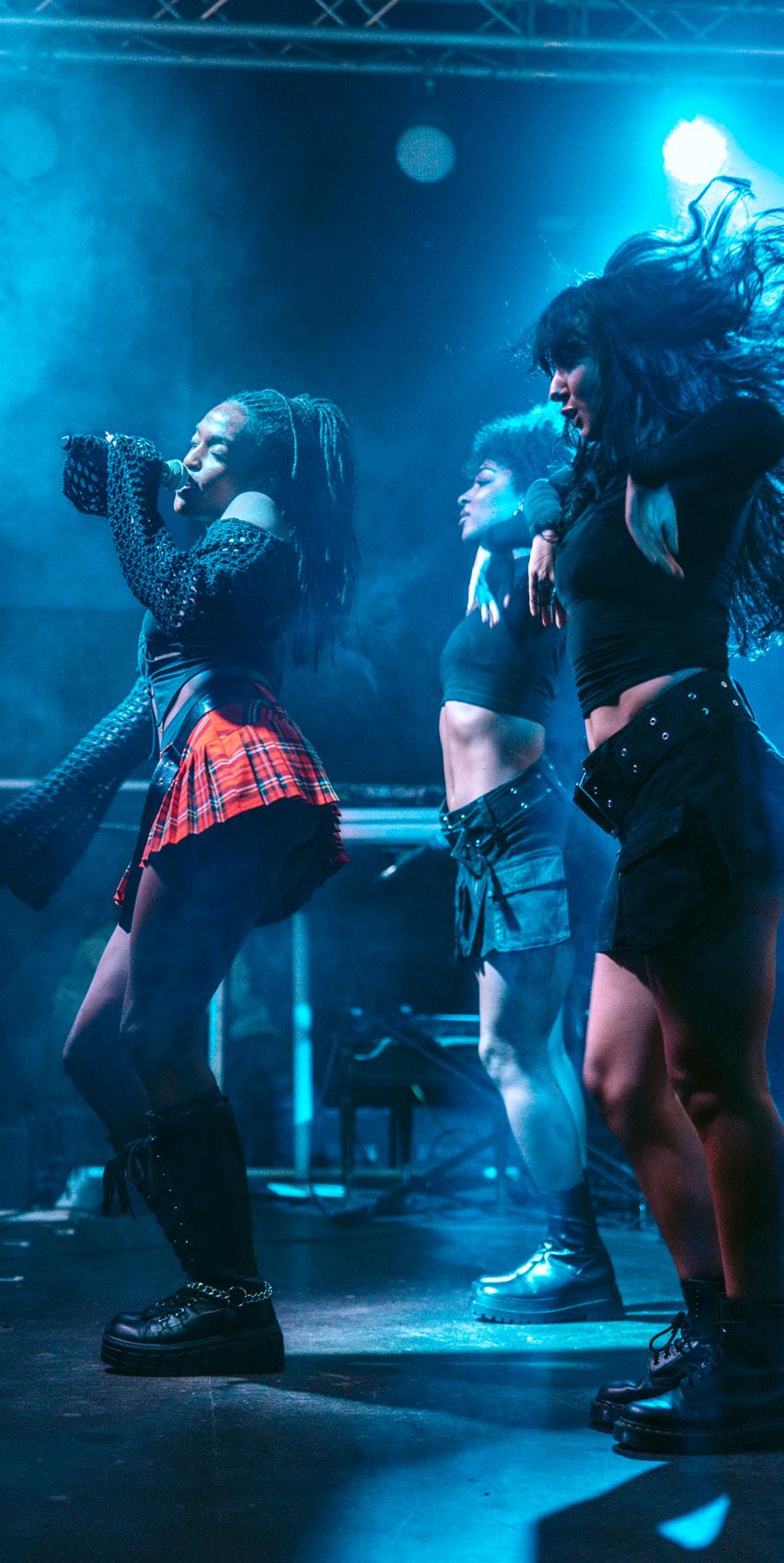



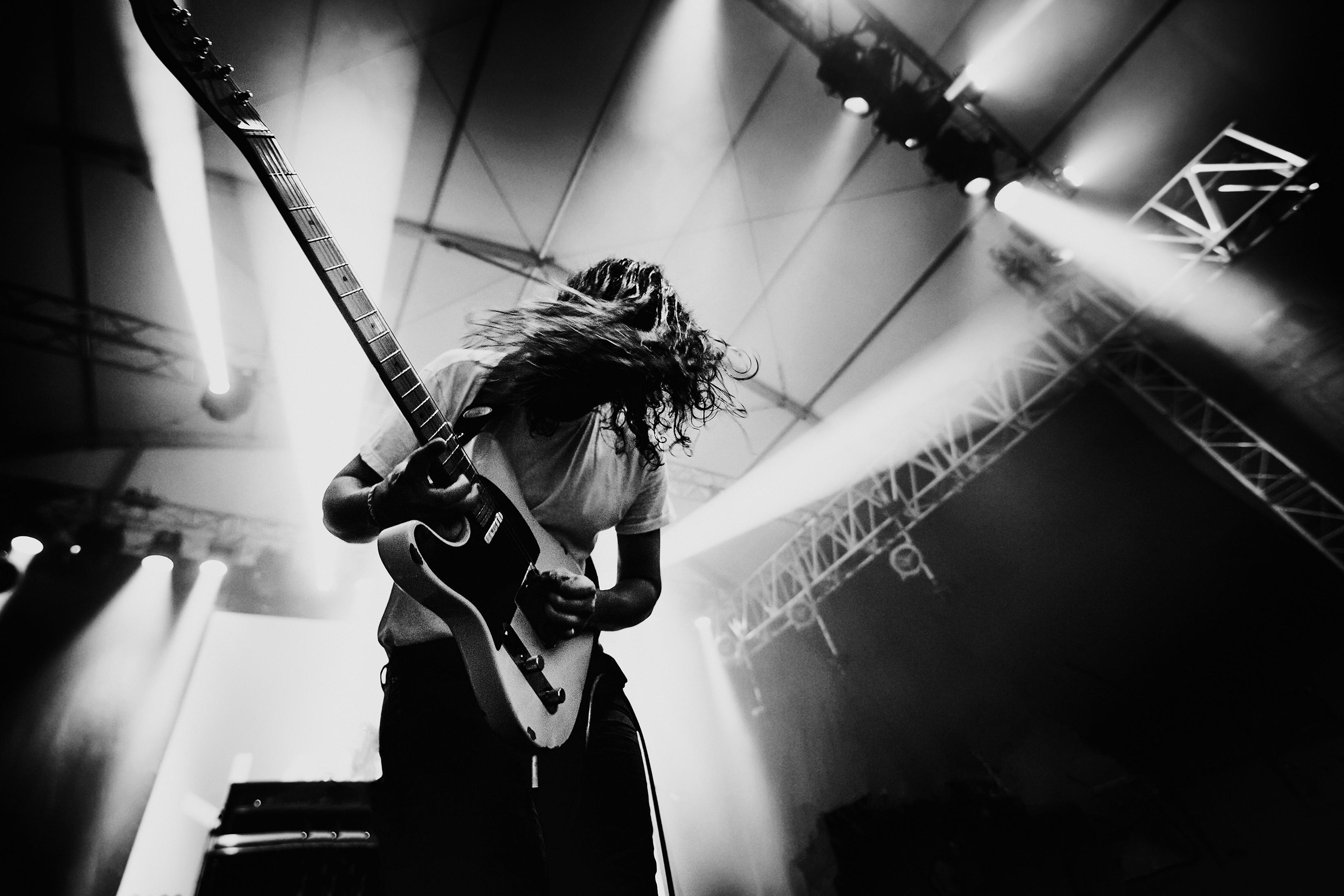

Paul Watson CEO
Keith Watson Chairman
Rian Zoll-Kahn COO
Alice Gustafson Editor-in-Chief
Adam Protz Deputy Editor
Liz Wilkinson Content and Communications Manager
Rick Dickerson
Reviews Editor
Marc Henshall Head of Digital
Grace Mcguigan
Artist Relations Manager
Rae Gray Head of Design
It’s official. The summer festival season has drawn to a close. Before you know it, it’ll be time to get the big coat out. However, Headliner is keeping the memory of a recent visit to Lakefest, nestled in a stunning valley beneath the Malvern Hills, fresh in its mind. Yes, the immediate pros of any festival are the lineup, seeking out the least dubious food options, and even securing access to a VIP toilet if you’re lucky, but one thing that can put a damper on even the sunniest of days is if the festival has bad audio.
Lakefest suffered from no such issue. To bring you this issue’s cover story, Headliner grabbed its press pass and headed to Ledbury to bring you an in-depth look at the powerful NEXO rig powering the main stage at the fastest-growing family festival in the UK, which this year attracted revellers young and old with acts as eclectic as Faithless, Busted, Groove Armada and Echo & The Bunnymen.
And it wasn’t just the FOH engineers singing the system’s praises: Lakefest headliners Groove Armada were also in awe of the sheer power of the main stage system. After an electrifying DJ set, Headliner caught up with Andy Cato (one half of the English electronic music duo), who explained why playing with such an impressive rig was a liberating experience, and revealed why he sold his rights to his Groove Armada catalogue to buy a 100-hectare farm.
Away from the main stage, NEXO was making a big impact elsewhere, as Lakefest was the UK debut for the
brand’s new NEXO Alpha+ system. Headliner spoke to the FOH engineer manning the three tents where the system was debuted to hear his first impressions. Headlining one of those stages were pioneers of acid jazz, The Brand New Heavies, who stressed that the sound quality at a festival is make or break for them, while the band’s bassist, Andrew Levy, weighed in on the group’s enduring appeal.
In the world of film sound, Headliner brings you interviews with the creatives behind some of the biggest recent releases: John Murphy and David Fleming delve into writing the music for 2025’s Superman – tastefully using elements of the classic John Williams theme, while fearing they may have earned themselves a one-way ticket to composer hell for meddling with the iconic music.
Meanwhile, the highly anticipated follow-up to the 1984 mockumentary, This Is Spinal Tap, Spinal Tap II: The End Continues, has arrived in cinemas. Despite the band’s temporary manager famously declaring in the 1984 original that, “You don’t do heavy metal in Dubly,” Spinal Tap II features Dolby Atmos sound. One can only imagine what This Is Spinal Tap’s Jeanine Pettibone would have to say about the band getting the immersive audio treatment. As a fan of the cult classic, working on the film was a dream come true for Emmy-winning production sound mixer Chris Welcker, who reveals what it was like to capture the audio for one of England’s loudest bands. Thankfully, due to his array of Lectrosonics wireless technology, his
review of the way his kit handled the unprecedented audio challenges onset is considerably more favourable than that of the parody band’s album, Shark Sandwich
Meanwhile, Headliner chatted to singer-songwriter Newton Faulkner about the making of his new record, Octopus – an album that defies genres and any concept of the folkindie sound he broke through with almost 20 years ago, while Ramera Abraham reflects on going from studio runner to being JADE’s go-to vocal producer, having worked on tracks on the Little Mix singer’s debut solo album, That’s Showbiz Baby
We’ve got the latest in pro audio covered too, bringing you an exclusive interview with AlphaTheta’s Mark Grotefeld on honouring the Pioneer DJ legacy, embracing inclusivity, and using music to drive unity, purpose, and future innovation. Elsewhere, Paul Hales, CEO of Theory Professional, shares his journey, design philosophy, and reveals why the company’s future lies in commercial installations.
Plus, we bring you the latest from the worlds of studio, live sound, installations, sound production, broadcast, and the most exciting emerging artists.
Enjoy!
Alice Gustafson Editor-in-Chief
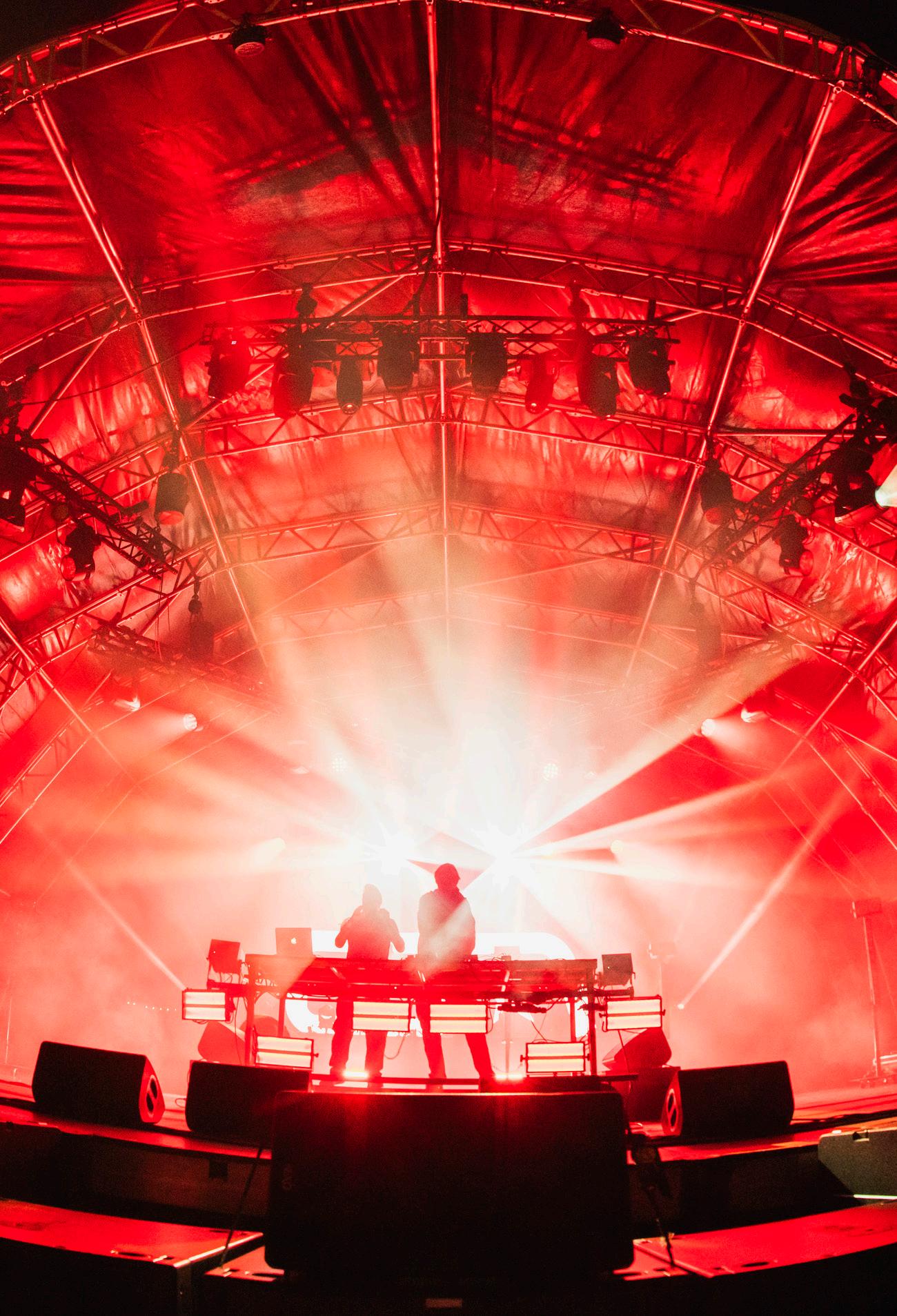
By Alice Gustafson

By Adam Protz
PRODUCER
producing for JADE
By Adam Protz Ramera Abraham:
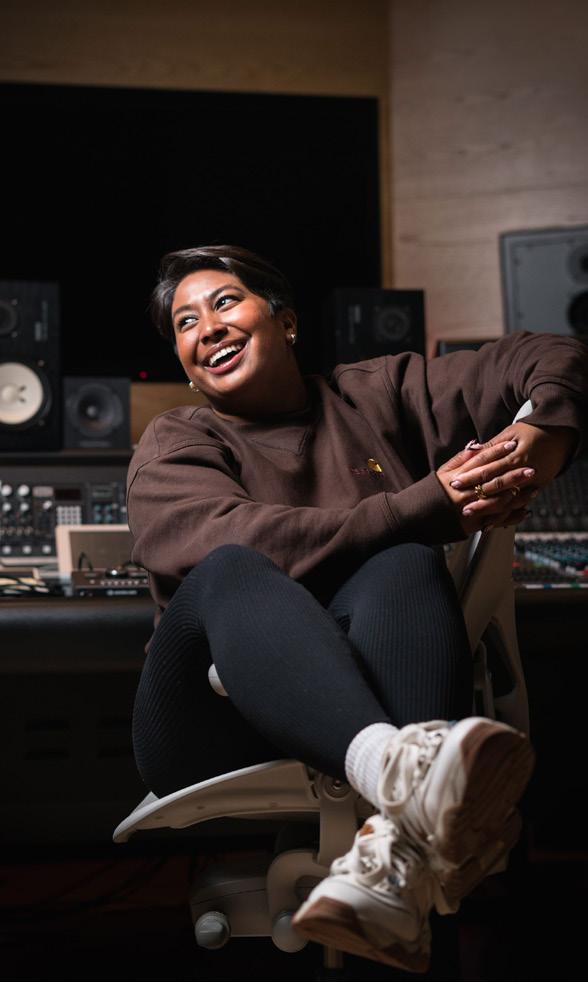
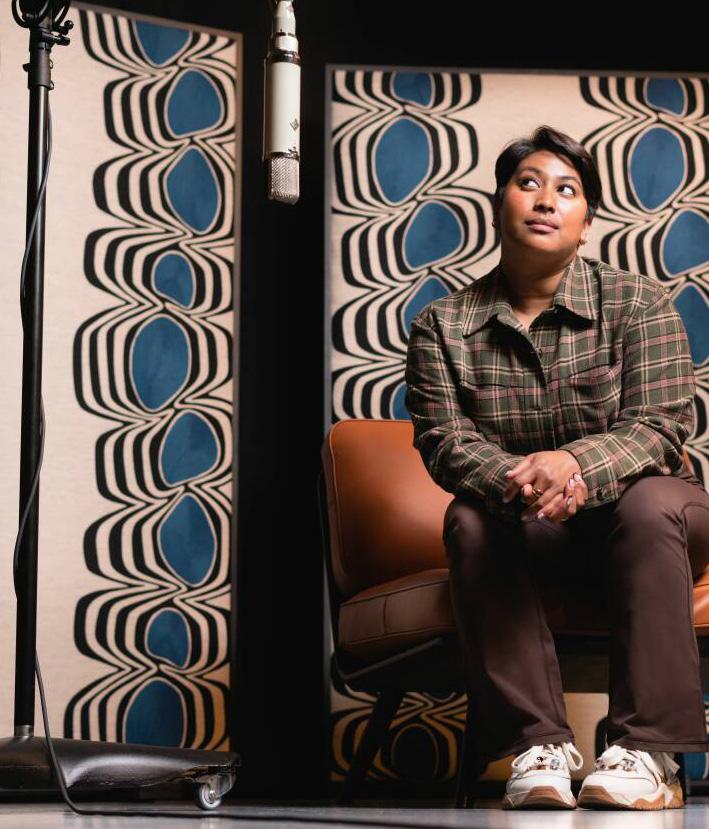
58 CAPTURING THE AUDIO FOR SPINAL TAP II
62 THE BIG INTERVIEW
AlphaTheta’s Mark Grotefeld: private equity pressures to purpose-driven growth
68 PAUL HALES The future of Theory Professional
80 CBC/RADIO-CANADA SETS THE STANDARD WITH LAWO
84 HOW TOMORROWLAND’S MAIN STAGE WAS REBUILT 24 HOURS AFTER FIRE
86 WHY BEN ANDERSON RELIES ON NOTHING MORE THAN AUDIX MICS 66 RIEDEL COMMUNICATIONS DELIVERS COMMUNICATIONS BACKBONE FOR GUYS & DOLLS 72 BEHIND LOKERSE FEESTEN’S SECRET SESSIONS
76 MY CHEMICAL ROMANCE’S BLACK PARADE CARRIES ON WITH L-ACOUSTICS
90 INDUSTRY INSIGHT Why executives should lead like entertainers


STUCK IN THE MIDDLE
ODHRÁN MURPHY
Dubbed ‘Paul Mescal with a guitar’, Odhrán Murphy is an Irish singersongwriter fusing folk, country, and acoustic music. Since releasing his debut single Stars in 2022, he has opened for Mumford and Sons to 20,000 people, performed at the Great Escape Festival, and had his songs heard on Love Island . He gives the lowdown on his new EP, Stuck In The Middle.
Murphy grew up amidst the beautiful landscapes of County Armagh, Northern Ireland, where the countryside has greatly informed his music. In fact, he features the natural scenery of the region in all his videos and artist photos so heavily that the local tourism board should probably
be paying him. His penchant for folky melodies and acoustic guitars makes all the more sense when you witness all the hills, trees and lakes he spends time around.
Credit: Aoif Moloney photo
Away from the natural world, he’s been steadily building up a huge online following, accumulating 2.6 million likes and 120k followers on TikTok, next to 430k monthly listeners on Spotify. It all started with his debut single Stars — he asked his audience if he thought the song would work on Love Island, who then diligently started tagging all the relevant people. Lo and behold, the song was then used on the hit dating programme.
He was doing music around his day job as a Gaelic teacher, but his single releases became increasingly viral online, with his third single, Limitless Love, also conquering the TikTok algorithm, and currently close to nine million Spotify streams.

“In County Armagh, we’ve got a lot of beautiful scenery,” Murphy says. “There’s a forest walk right beside my house, and that’s where I go down to write music most of the time. It’s like a getaway where I can just go and sit down and write beside the river, which calms me as well. The videos that you’re seeing online are in County Meath, and we rented an old cottage on Airbnb. The cottage was absolutely amazing, but the surroundings were even better. We were able to shoot two music videos down there and shoot a lot of promotional content for the new EP. Ireland’s full of beautiful, beautiful places. It’s definitely not short of that.”
2022 was the year Murphy formally debuted as a releasing artist with Stars. The piano-led ballad is one of his more synth and pop-infused numbers, prior to the acoustic guitar becoming one of the more defining characteristics of his music.
“I didn’t really know what I was doing myself,” he says of his debut single,
which he released independently. “I didn’t really know what tools to use or who to ask. I was self-releasing and trying to promote my stuff on TikTok. I asked my followers, ‘Do you think this song would be good in a scene in Love Island?’ And then everybody just started tagging Virgin TV and ITV. One of the producers from the show sent me an email and said, ‘We’ve seen your TikTok, and we love your song.’ You wouldn’t believe the number of Shazams that you actually get from that. That was when I started thinking, ‘Okay, you’re not doing too bad here, there’s something in this music.’”
More pinch yourself moments would come for Murphy, especially when he was booked to open for Mumford and Sons in Dublin in front of 20,000 people. Knowing he grew up listening to the hit-making folk-rock band, you can forgive him for letting out a scream of excitement in a public place when he found out it was happening.
“It’s definitely my favourite gig. Growing up listening to those guys was a treat for all of us, and being able to share the stage with them was a really special moment. It just all flew by at the time. I wish I could go back and relive it and take it all in.
It’s my biggest show to date as well — whether that ends up being the best thing I do, I don’t really mind.
Credit: Aoif Moloney
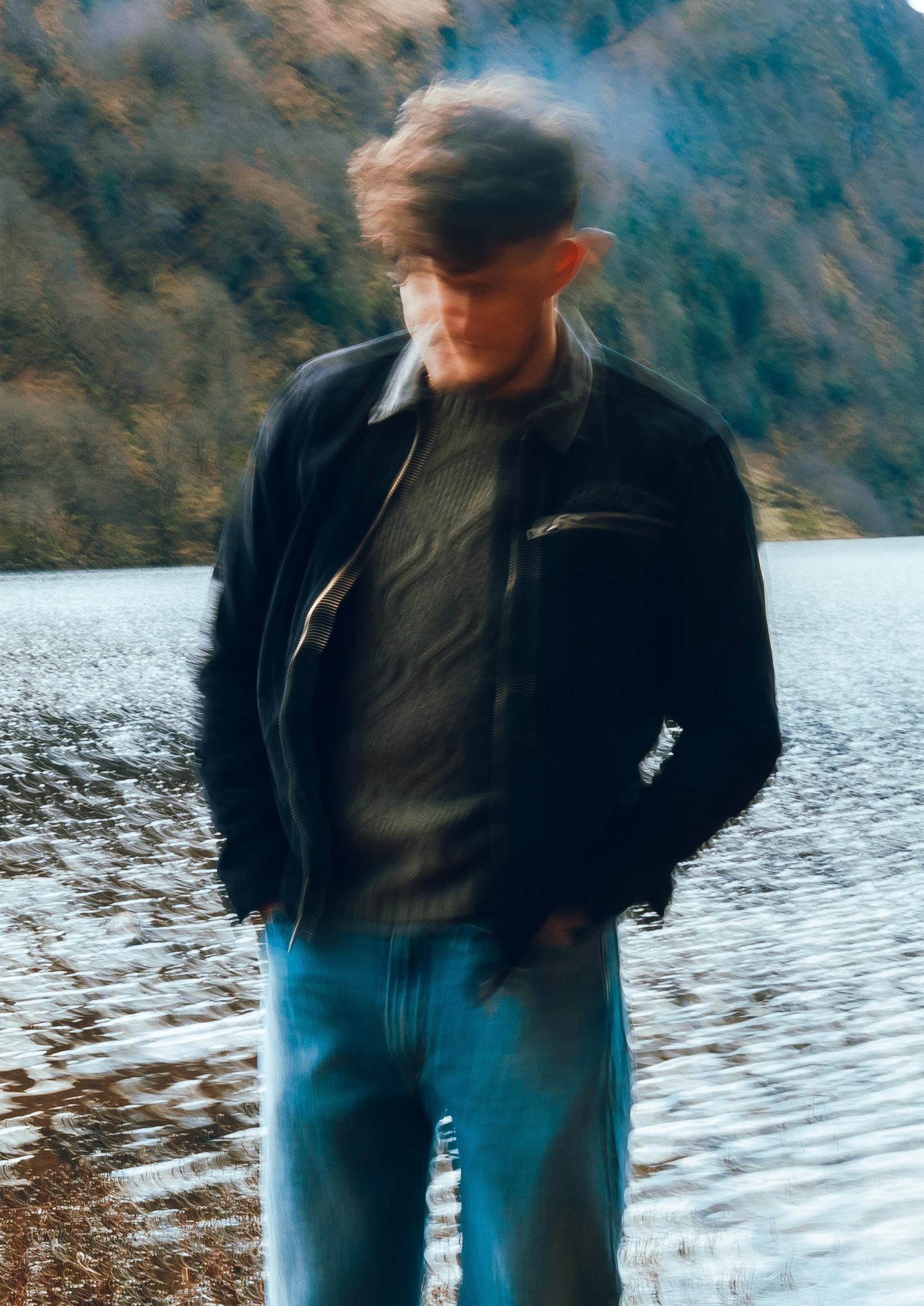
Credit: Aoif Moloney
photo
PEOPLE ALWAYS ASK ME, ‘ARE YOU GOING TO GET A PROPER JOB?’
“I was actually in upstate New York at the time when I found out; my booking agent had texted me and said, ‘Look at your emails.’ The email said, ‘You’ve got the green light to support Mumford and Sons at Malahide Castle.’ I was just about to catch my flight home, and I remember screaming in the airport. People were probably looking at me, going, ‘What is he doing?’”
Murphy’s new six-track EP, Stuck In The Middle, dropped at the end of July and features the kind of hearty stomping and guitar strumming you might expect from someone who wears his Lumineers and Mumford and Sons influences proudly on his sleeve. It opens with its first single, Close To You, with the appropriate amount of group, ‘Hey!’ shouts and sing-along ‘ooh’ moments.
On the relatively spontaneous way in which the EP came together, he says of the title track: “Stuck in the Middle came out when I was going through a lot of hard things in life, and I decided, why not throw this song right in the middle of the EP? The whole EP is based on love and reallife scenarios that have happened in my life, and the ups and downs people go through in life, whether you’re a musician or in your work. I definitely think that people can relate to the Stuck in the Middle EP.”
Recorded in something of a dream scenario for Murphy in locations like Nashville and Woodstock in the States, this EP and his burgeoning career are the fruits of him diligently
sticking to his craft when people around him were asking when he’d get a “proper job.” In fact, the former teacher has a song on the EP about just that.
Kerosene opens with an excellentlyproduced intro with touches of ambience, before the singer asks in the verse, “What if I don’t fit inside the box they made me carry?”
“I was working in a primary school, teaching children the Irish language. And at that time, I was getting a lot of questions on what I wanted to do in life. People were like, ‘Are you still doing the music thing? I tried to explain that I’m always going to be doing the music thing. Kerosene was about proving to those people that I can do music as a job. People would always ask me, ‘Are you going to get a proper job?’ I’d say, ‘Well, music is a proper job.’ It was hard to get that message around to them.”
Ahead of his October UK tour, Murphy embarked on a grassroots tour of pubs across Ireland in August, and the pubs he stopped off at were announced on his social media.
“Myself and a few buddies who play music hired a camper van,” he says. “We went from north to south, from the very top of Ireland to the bottom of the country. It was a road trip, calling into a few places, and I was promoting it on my social media in terms of bars I’d be calling into. It was a get together and a celebration of my EP. But also, I wanted people to come and sing songs with me as well.
And maybe have a sneaky Guinness as well,” he grins.
When asked to ponder what the phrase Play Out Loud means to him, Murphy says: “I suppose my music is for road trips, and you can definitely get into the car and play my songs out loud. But I also think it’s a good phrase for people who struggle to talk, and that’s where music comes in. I definitely like to tell my stories through music, especially back in the time where I struggled with my mental health, and I was able to put that through a song. So ‘play out loud’ for me is also telling stories, and it’s for people who are afraid to talk. There’s so many stories within music.”
To catch Murphy out on the road, his happy place, you can catch him at one of his performances in Ireland. Either way, you can get stuck into his landmark new EP, Stuck In The Middle, wherever you get your music.
INSTA: @ODHRANMURPHYMUSIC QSC.COM SPONSORED BY

Bridging in-room and personal headphone monitoring
Our UNIO TM Ecosystem gives the ability to optimise, align and seamlessly navigate your monitoring options, for the exibility to work anywhere, anytime – from stereo to immersive.
Now, with the introduction of Personal Reference Monitoring – our pioneering new active monitoring headphone solution –UNIO offers the very highest level of headphone accuracy.
genelec.com/unio

Photographer: Adam Gasson
s by ALICE
GUSTAFSON
GROOVE ARMADA AND NEXO TURN FAMILY FESTIVAL UP TO 11
Families who rave together, stay together – at least that was certainly the case throughout the recent Lakefest music festival. Set in the heart of an Area of Outstanding Natural Beauty, the festival takes place in a stunning valley beneath the Malvern Hills, within the impressive grounds of Eastnor Castle. Billed as the fastest-growing family festival in the UK, this year the sold-out event attracted revellers young and old with acts as eclectic as Faithless, Busted, Groove Armada, Echo & The Bunnymen… and Dick & Dom. With over 400 performers across 12 stages, and only the first act of each day getting a sound check, the FOH engineers had every reason to feel the pressure. They explain how the festival’s NEXO main stage rig meant that the only thing they had to worry about was making the sound suitable for those aged one to 100.
The main stage was the centre of the action, and with a packed schedule of back-to-back acts, Headliner catches FOH engineers Ryan James and Rob Jones in between sets, who are handling RF coordination for the main stage and FOH audio for every act aside from Faithless and Busted. “The biggest challenge is that the opening act is the only band we get to sound check for the day,” begins James, joining Headliner as soon as female-fronted rock band Kodachrome finish an impressive and energetic set, which happens to be their first on a stage of this size.
“We have 15 to 20 minute changeovers between bands, and we only get to line check a band. So the first time we hear them is when the audience hears them as well. We need to be able to deliver something audible as a starting point, and by the end of the first song, we want to make sure that we’ve got it tight and tuned in. So the first track is really difficult – it’s constant tweaks on the fly.”
Lakefest was in good hands, though, as it’s not James or Jones’ first rodeo – they both assumed FOH duties last year, too, with James also heading up and managing the patch and monitoring team on stage. “The bands that are coming in have got a specific sound that they want, and normally, for us to try and deliver that consistently, we have to do a lot of research beforehand on the bands that we are mixing,” explains James. “We need to try to replicate that in an environment that doesn’t always allow it to be replicated.”
The FOH prep work begins around six months in advance, where James and Jones factor in everything from tech riders, anything included in the Total Sound Solutions inventory that deviates from that, and the all-important patch sheet. “The communication between all of the crew has been fantastic,” concurs Jones, who Headliner catches up with immediately after Arctic
Monkeys-esque Doncaster band, The Outcharms, finish their set. “We all know each other’s roles clearly, and that makes the line check process pretty painless, but we’re always diving in on the fly as well. It’s all about timing with festivals – you need to be on top of what you’re dealing with.”
Lakefest boasted an all-NEXO system across each of the festival’s 12 stages. The main stage was rigged by Swansea’s Total Sound Solutions, which gave the team every confidence that they could handle anything thrown at them. The main stage was flanked by left and right hangs of 12 NEXO GEO M12s and a flowing stack of eight MSUB18s, bolstered by two separate hangs of five GEO M12s for delays and further groundstacked MSUB18s in a cardioid away pattern to cancel out the bass out on stage. Meanwhile, NEXO P+ Series point source speakers were used for monitors and front fills, and original Alpha Es for side fills, and power and
processing for all NEXO systems came from NEXO NXAMP Powered TD Controllers / NUAR racks.
“What makes it so easy for us is we’ve got a great PA, so we just turn it up,” shouts James, as right on queue, Jones begins the line check for the next act. The audio is sublime by the way – and loud. “If we were doing this interview on stage, you wouldn’t hear any sub or any sound at all,” he insists, raising his voice again as the drum kit is linechecked.
“But standing out here now, as you can hear, the system feels like it’s really in your face! That’s the nice thing with the M12s – we’re getting a good 60 metres before having to put delays in at its maximum hang of 12 boxes.”


“Lakefest is tricky because it’s a family festival,” admits James, referring to tuning and balancing the mix for people of all ages in an expansive open-air environment – amidst 11 other stages, “although we’ve got the biggest system,” he grins. “The containment of the sound is really good within their line array, and we don’t have a lot of bleed if we are all playing at the same time. If you’re in that area, that’s the system you will be listening to. At Lakefest, the sound needs to cater to a three-yearold child, as well as a hard rock fan who wants to hear everything at 120 decibels. We have to find the balance of making sure that it’s nice for kids to listen to and not blowing their ears off, and for the punter who wants to stand up front, rocking out. The NEXO rig has a good balance, so anywhere you stand, you’ll hear it.”
He’s not wrong. Headliner ventures to the very back of the festival to check if James’ statement is true, where people working in vendor vans, suddenly, with a lack of customers, lean out of their respective windows to see what all the commotion is about. If anyone was aiming to avoid Dick & Dom’s set, this was futile, as the NEXO rig effortlessly reached the furthest corners of the expansive field, with everything from House of Pain’s Jump Around and Vengaboys’ We Like
to Party! sending the crowd into a frenzy, whatever their location.
“We’ve got a nice even coverage and a good SPL level that’s very consistent across the board, all the way up to 60 metres, before we put the delay towers in to do the next 60 metres of the field,” nods James, gesturing to the area behind FOH – which by this point is a sea of camping chairs and picnic blankets. “This is where loads of families sit, so everyone can be comfortable, and still feel the music. The sub is travelling all the way up, but the high end and the vocals aren’t as in your face. You have a spot where you can find your happy place for the day – if you want to really rock out, you can come forward, and that’s where the PA is doing a lot of its hard work. But further back is really nice. You can still dance and feel the energy, but you’re not necessarily having that energy hitting you.”
Balancing a vast, wide audience space with a repertoire that demands both crystal-clear detail and powerful dynamic range creates unique challenges for sound reinforcement, but James and Jones were more than confident in the NEXO rig’s ability to deliver for Lakefest. “The dynamic of the GEO M12 is really nice,” enthuses James. “When they need high energy, we don’t have to
push the overall level of the system to allow space for certain vocals. In the frequency response of the box, we are able to leave space for every different instrument and every vocal. It’s a lot easier to do that using the GEO M12, as the box sounds very nice, dynamically, and the frequency response to the box allows space for all the different elements of the mix, so we never have to make it too loud for the band to sound good.”
He also likes that they don’t have to push to a high SPL to achieve a nice-sounding box. “Like I said, it’s a family festival, so the sound is really clear, but it’s still loud enough that everybody’s happy,” James reiterates. “The bands are happy, the audience is happy. The three-year-old child is not crying, and the 80-year-old man, who’s half deaf, can still hear what’s happening because of the clarity of the box, which is phenomenal,” he says, also pointing out how easy the system is to hang. “We’re limited on time and on staff at festivals, but it only took us half a day to put everything up, and that makes a big difference when deciding which PA to use. That was a big reason why we chose NEXO. Two people can put this whole line array up with no issue whatsoever, really easily. And it sounds great!”
“AS A DJ, PLAYING ON A SYSTEM LIKE THAT IS A REALLY LIBERATING EXPERIENCE.”
- ANDY CATO GROOVE ARMADA
“I’m very impressed with it too,” adds Jones, who by this point in the afternoon is now shouting over James’ next line check. “The system is incredible to work on. It stands up against a lot of the other big-format line arrays I’ve used, and the results have been great. To me, this system sounds almost like a pair of studio monitors. I can’t believe how upfront and present it is in an open-air environment. It sounds a lot nearer to me than it actually is, which is very useful. We don’t seem to be losing a lot of headroom through the wind, and I’m finding this incredibly easy to mix on. In fact, what we’re finding with this system is it’s so present and clear, we’re having to bus compress things to glue them together. It’s almost too good, which is never a bad place to be! We have really good control over everything we need. We’re not fighting to get anything over, and we’re running at really good levels.
“We try to go with that natural dynamic of people rolling out of a tent at 11 o’clock with a hangover, to the lively part in the evening, and the system has all the potential we need to achieve that.”
James and Jones used a Yamaha CL5 digital mixing console at FOH, featuring a three-section fader layout designed for efficient, hands-on control, making it a nobrainer for Lakefest due to its 72 mono input channels and eight stereo inputs, along with a flexible fader configuration. “We call the CL5 the good old faithful,” smiles James. “It’s an older console, but it’s so rock and roll, and it’s so good for festivals.”
GROOVE ARMADA
As powerful as the system is in the day, James and Jones are itching to turn it up to 11 for Friday’s headline set, which sees English electronic music duo Groove Armada take to the stage for a high-energy DJ set. “We build the levels incrementally during the day, so at Groove Armada tonight it’ll be kicking way more than this afternoon,” smiles Jones. “We’ve just got to make it really clear and really loud, and the system will just do that for us. So that’s an easy one.”
“We’ll get to properly open up the system,” enthuses James. “We know what Groove Armada wants to sound like from the way that the music is produced, so we want to make sure that what you hear in your car gets replicated in the field, but just way bigger. We want to open up the sides so that it’s really hitting you. We want people to walk away and say, ‘Wow! Unbelievable!’ The sub needs to hit you for 150 meters, and it will tonight. So stick around for that one, because you can be anywhere on this field, and I promise you, you will feel it. We’re gonna be blowing people’s socks off,” he grins.
They certainly keep their promise. Groove Armada’s Andy Cato and Tom Findlay start promptly at 10pm under the glow of an (almost) Sturgeon Moon, and demonstrate that this
is indeed the house that funk built, Groove Armada style – which, to the delight of the now quite merry audience, is teased multiple times throughout their hyper-powered set, before the inevitable payoff of I See You Baby in full, which has the crowd erupting into a frenzy. The set was a joy to behold: a pulsating, laser-lit masterclass in dancefloor energy. Red and white beams cut through the night as the duo unleashed a pulsating, relentless mix of their own hits and dance classics like You’ve Got The Love and Strike‘s U Sure Do – each drop perfectly synced with the lighting. And despite the late hour, glowstick-armed kids are hoisted on shoulders in every direction. But it was Superstylin’ – teased throughout the set before finally unleashed in its full glory – that sent hands skyward and strobe lights into overdrive.
Groove Armada are no strangers to the importance of delivering pristine sound at outdoor music festivals, having come up through playing clubs and later founding Lovebox, which became one of the UK’s most-loved festivals. Having played through almost every PA system and line array going, Cato was full of praise for the NEXO rig at Lakefest:
“It was brilliant; one of the pieces in the DJ chess game is weighing up
what is and isn’t possible with the system you’re on,” Cato says after his set. “Quite often you have to rule out certain tunes because they just won’t cut it. It’s lovely when you end up in a situation where you’ve got loads of headroom, everything’s really clean, but it still has that weight that makes the bottom of your jeans flap and hits you deep in the stomach! As a DJ, playing on a system like that is a really liberating experience.”
Cato outlines what he looks for in a festival sound system to bring Groove Armada’s catalogue to life: “It’s that range of frequency response, because if you’re doing what we’re trying to do, which is combine tunes from different decades, production has changed massively, even just between the ‘90s and now,” he points out. “So you need to be able to correct and adapt to fuse all those things together, since different generations of tunes punch in different places. All of that needs to come through, which is what we had at Lakefest. That means we can do this Balearic sweep of music across the ages, which, if the sound system isn’t up to it, just doesn’t work. Particularly at outdoor festivals, you’ve got to keep it directional and focused. There’s nothing more frustrating, as a DJ or a punter, than watching your top end disappear in the wind. So keeping it tight and focused is key.”
Headliner experiences the full force of the NEXO rig at the FOH area, and Groove Armada’s set certainly saw the sound system stretch its legs. Bass-heavy tracks hit square in the chest, and when a powerful female vocal cuts through the mix, it slices the air like a sonic javelin, pristine and commanding. Over at FOH, the engineers were all smiles – James presses a hand to his chest as the bass reverberates through his core, and grins as he gives a thumbs up to Jones.

ALPHA +’S UK DEBUT
Away from the main stage, NEXO was making a big impact elsewhere, as Lakefest was the UK debut for the brand’s new NEXO Alpha+ system, which was used on the Funkytown stage, 7 Hills tent and the Secret Rave, while the original Alpha system (much loved and the inspiration for Alpha+) was used in the Retrospective of House tent. Funkytown was like a festival in itself, boasting acts including Buzzcocks, Dub Pistols, So Solid Crew & The Brand New Heavies.
Assuming FOH duties across three stages at Lakefest, including 7 Hills, was seasoned Glastonbury engineer, Paul Wiltshire, owner of PW Group in Bristol, who had nothing but glowing praise for the new system: “The system is phenomenal,” he tells Headliner from a sun-soaked VIP
area overlooking a huge LOVE LAKE FEST sign, pointing out that there was no learning curve. “It’s super. Everything’s just there, and you don’t have to drive it to get stupid amounts out of it. It does everything it says on the tin. It’s quite simple.
“It’s got the bottom end, it’s got the main, it’s got the drive, it’s got the top end. I think it’s got too much top end, personally! The tops are so good that you don’t need anything else, really. It’s a crazy rig – well, a stack of sides,” he clarifies.
Drawing on the spirit of its forerunner, Alpha+ applies new technologies to optimise performance and flexibility in a range of settings from live music and clubs to theatres and venues, and as it turns out, Circus-
style festival tents. “And all tents are horrible, because it’s a plastic sheet,” stresses Wiltshire. “So when you fire sound at a plastic sheet, it resonates and sends it back, so you don’t always get the best sound in a big tent, but I can’t fault the Alpha+. It’s mind-blowing.
“And I love the NEXO RS18s, but I think the L20s are even better. It’s got so much headroom, and it covers the whole spectrum of what you want it to do without having to work too hard. It’s a proper system, and if you’ve heard what it can do, you know what it’s capable of doing.”
“I WAS BLOWN AWAY BY THE SOUND QUALITY OF THE NEXO SYSTEM. EVERYTHING HAD PLENTY OF HEADROOM, WITH NOTHING BEING DISTORTED AND NO NEED FOR LIMITING.”
- ANDREW LEVY THE BRAND NEW HEAVIES
The quality of the Alpha+ system didn’t go unnoticed by The Brand New Heavies either, who played to a lively crowd in the Funkytown tent. “The quality of the sound at a show is 90% of it for us,” enthuses Andrew Levy, who’s been The Brand New Heavies’ bassist since the group formed in the late ‘80s. “We’re not an in-ears band, and we’ve had to fight back against it and really reject using it, because, for us, it takes away from the groove and the physical act of playing an instrument. A lot of people putting on festivals don’t always focus on having good sound quality on stage. There are many times where, because we’re
such a big band – 32 inputs and nine people on stage – there can be a lot of distortion if the amps for the stage monitors aren’t up to it and there’s no headroom. Having decent equipment with good headroom – not necessarily loud, but able to handle the transients from the kick drum and bass – is crucial,” he stresses. “You need good amps to deliver that properly. So it’s a big deal for us, and we’re always fighting to make sure the onstage sound – which the crowd don’t really notice – is the best it can be. I must say, those NEXO speakers were fantastic. I was blown away by the sound quality of the NEXO system.
Everything had plenty of headroom, with nothing being distorted and no need for limiting. I like to have a lot of drums in my monitors, and bass too –and that does mean the wedges take a pounding when I’ve got those going through, but everything held up and sounded great.
“I’m glad we had the chance to use the new NEXO gear. We’ll definitely use it again,” he concludes.
NEXO-SA.COM

ANDY CATO DECKS-TO-DIRT
From the dance floors of Ibiza to the fields of his farm, Andy Cato’s journey is a rare blend of creative ambition and sustainable living. Away from the decks as one half of Groove Armada, Cato has embraced a radically different life. He explains why he sold his rights to his Groove Armada catalogue in order to buy a 100-hectare farm.
After what many feared was a farewell run of shows in 2022, fans are delighted that they can still catch the duo at numerous festivals to this day. “We’ve done a lot of gigs this year – probably about 70,” estimates Cato, speaking to Headliner following Groove Armada’s recent headline set at Lakefest.
“So it’s as busy as it’s ever been, to be honest. The only thing we stopped doing were the live band gigs,” he clarifies. “We first stopped back in 2010 and then, for various reasons, we did it one more time. Not helped by the fact that I’ve got this fairly all-consuming focus on bringing regenerative farming to the high street through Wildfarmed, which takes up a lot of my time. So the era of three-month tours, which is what
playing live with the band requires, just doesn’t really work anymore.”
He reveals that while most of his time is dedicated to farming these days, the other half of Groove Armada, Tom Findlay, has also found an alternative career as a therapist. “So I think the days of months on the road had to be drawn to a close after 15 amazing years,” he smiles. “But from the start, back in ’96, we’ve always been DJing – that’s never changed. That’s still the case today, and it’s an enormous privilege to still be doing it, 30-odd years later.”
Groove Armada sets have always balanced deep club culture with mass-appeal anthems. Cato reveals how they decide what makes it onto the setlist for a festival crowd in 2025:
they decide on the spot. “It radically changes. Nothing is decided before we start, other than how we’re going to kick things off, and even that’s usually worked out on the side of the stage just before we go on,” he grins.
“Pretty much everything we play these days is an edit, but there are a few that work really well and we use them as anchors throughout the set. The rest of it is about reading the room, which is as much a part of the art of DJing as anything else. People work hard, they come to these things, it costs them a fair bit of money, and our overriding responsibility is to make that hour and a half as special as we can,” says Cato on deciding how much of a track to give away before the big drop.
“It’s really important not to lose sight of that, and not to get too cool for school or just do whatever we feel like. It’s about understanding how we can make it special for the greatest number of people in the field. But you don’t want to do that just by playing everything obvious. That might get something going, but it’s a sugary kind of satisfaction – there’s no depth to it. The balance we’re constantly trying to strike is using snippets of familiar tunes, not just ours, but other people’s as well, as a way to move into deeper sections while keeping a sense of anticipation. This is where DJing gets really interesting, and where the 30year alchemy between the two of us comes in, which is really fun.”
Over two decades on, their most wellknown hit, I See You Baby continues to resonate, proving its enduring appeal both on the dance floor and in pop culture. Cato says he never could have predicted the life the song went on to have in the TV sync music world. “We had no idea about any of it; we never had a master plan,” he admits. “I don’t know if it was for that track, but the weirdest sync request I can remember was the US Navy wanting to use one of our songs for a recruitment drive. Suffice to say, that was a no. We were just making music we liked, DJing at parties where we could, and then figuring out how to try and play dance music live,” he reflects.
“We worked hard at it, and we got lucky. I could never have foreseen any of this. In fact, I See You Baby was apparently David Byrne from Talking
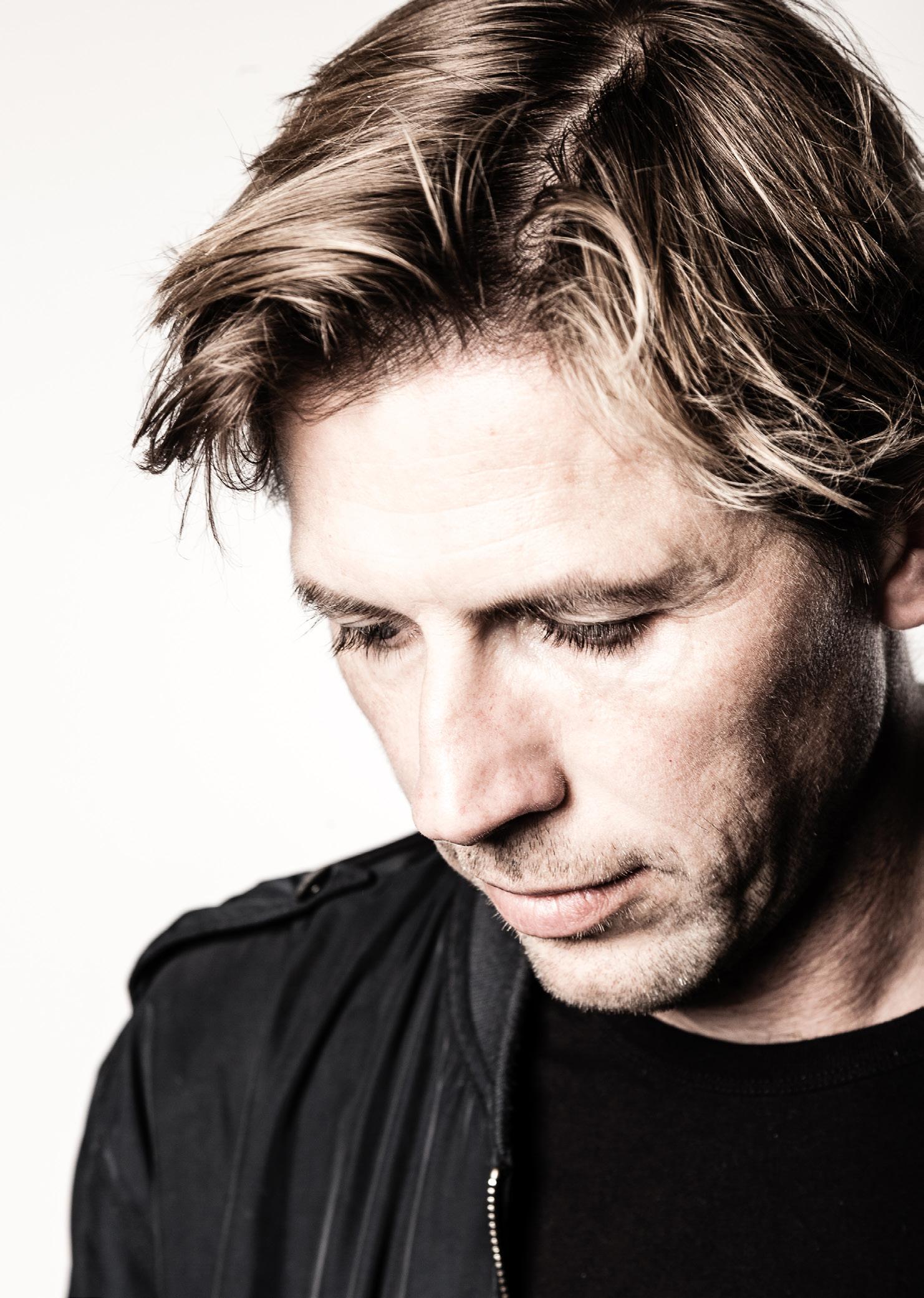
Heads’ first dance tune at his recent wedding. I definitely couldn’t have predicted that one!”
Farming is now Cato’s full-time focus (you might have spotted him in a recent episode of Clarkson’s Farm), and balancing the demands of farm life with performing live has shifted his perspective.
After selling the rights to his Groove Armada tracks, Cato acquired a 100-hectare farm in the UK, where he now grows organic no-till crops and raises livestock on pasture.
“It was mad,” he says of his decision to sell the rights to his music. At the time, I was living in France and had a bit of a garden, so I started trying to grow vegetables, and went down what you could only call a spectacularly deep rabbit hole. On the way back from a gig, I read an article about the environmental consequences of food production. I’d never thought much about it before, and it was pretty sobering, to be honest. It had a line in it which said, ‘If you don’t like the system, don’t depend on it.’ That was very inspiring.”

Before long, all of Cato’s reading became horticultural and agricultural. “Then I made the mad decision to sell my publishing rights to finance the purchase of a farm, to try and do it at scale. What followed was a very humbling lesson in how hard it is to be a farmer.”
Cato very quickly went from feeling excited to realising that he was in way over his head: “I was at the point where nothing was really working: the farmhouse was completely overrun with weeds, and I was overwhelmed by the sheer range of skills needed to be a farmer. It was actually a very dark time,” he shares, adding that he counts himself lucky that he could still go and play records
on Ibiza’s The Space Terrace to avoid going bankrupt.
“It was exhausting. From that point on, I started doing my own research and development, and slowly built something we’re now trying to scale with Wildfarmed.” Today, Wildfarmed is a community of farmers focused on growing wheat the right way, making regenerative flour and bread that tastes better, and crucially, that is better for people and for the planet. Wildfarmed partners with bakeries, restaurant chains, supermarkets and over 100 growers.
Though he’s busy running the farm, the Groove Armada name continues to lure him back to the stage each
year. The stark difference in his two ‘day jobs’ is not lost on him:
“I have very surreal moments,” he nods, “going from being in Ibiza at 5am to speaking at the Labour Party conference about farming at 5pm the next day. I’ve been lucky enough to do this for a long time. On top of that, Tom’s been my best mate for 30 years. I love hanging out with him. Doing all of this is a real release from the day-to-day stresses and everything else.”

Credit: Luke Dyson
Words by aLICEGUST A F NOS
YOU ARE THE UNIVERSE
THE BRAND NEW HEAVIES
Few tracks capture the timeless groove of the Brand New Heavies quite like You Are the Universe. Released in 1997 as part of the band’s platinum-certified album Shelter, the song’s uplifting lyrics and irresistible funk-soul groove have made it a fan favourite across the globe, cementing the band’s place as pioneers of acid jazz. Andrew Levy, who’s been The Brand New Heavies’ bassist since the group formed in the late ‘80s, reflects on the group’s enduring appeal, why they never go out of style, and reveals new music plans…
Released as the third single from their fourth album Shelter, You Are The Universe reached number 21 in the UK and number 11 on the British ChartTrack, captivating audiences with its uplifting lyrics, infectious groove, and
sing-along appeal. It is a track that continues to resonate with fans around the world, particularly in Asia, and has become synonymous with the band’s signature sound of funk-infused jazz and soul.
“There’s something about that track that people have really adopted as one of their favourites from The Brand New Heavies,” begins Levy. “It’s uplifting as well, full of positive vibes, which is everything The Heavies are about.”
Formed in London in 1985 by Levy, Simon Bartholomew, and Jan Kincaid, The Brand New Heavies rose to international acclaim after adding N’Dea Davenport in 1990. They helped define acid jazz, blending funk, soul, jazz, hip hop, and disco into a danceable, sophisticated sound that
quickly found fans in clubs across the UK, Europe, the United States, and beyond.
“I think having the right songs has been key. We were self-produced, and we’ve written all of our hits, so having good songs is crucial,” he reflects on the band’s success, almost 40 years on.
“If there’s any advice I’d give to anyone starting in music, it’s always focus on songwriting, because those songs are the things that can propel your career and keep it going into the future.
Our fans come to hear the songs we released back in the ‘90s, and without those, I don’t think we’d still be here.
You can always have fun jamming and doing different things on stage, but it’s all about the songwriting. That’s what will give you a long career.”

Acid jazz started in London clubs and went global. Levy reflects on how the genre continues to appeal to new generations of listeners: “I think it’s the sound,” he considers. “The thing about the ‘70s is that it’s always being reinvented. It’s a bit like flared jeans. People are still designing and making bootcut or flared jeans, and they’re still cool. There’s just something about the ‘70s. I think it might be to do with disco music and the fact that house music is very similar, and EDM and dance music are basically the same as disco, just with a harder sound now. Some things in this world just don’t go out of fashion.”
“Luckily, we were right on the cusp of that time when disco was transitioning into EDM,” he continues. “The genre we chose to emulate a bit, that ‘70s funk sound, never goes out of fashion. And jazz never goes out of fashion either. I wish we’d actually decided on that genre intentionally, because it would have been a very good plan, seeing as it’s still in!”
To this day, the band gets booked for lots of jazz festivals, even though they’re not technically jazz players. “There’s something about jazz and funk and soul that’s always going to be at the forefront of what people want in music when they go out for entertainment,” he says.
With decades of touring behind them and over 2.5 million records sold worldwide, the band continues to perform for audiences across the UK and Europe, with dates lined up into 2026. Levy is particularly looking forward to performing in Italy and Paris – the latter where the band have a lot of fans due to their label in the ‘90s being based there.
“There’s still a big following there. We were being taken out and paraded around Paris all the time back in the ‘90s because we were hot stuff. Meeting different celebrities and knowing that they loved our music was amazing. We were this little old band from the suburbs of West London, and we had people like Mike Tyson loving our stuff, and Spike Lee and Stevie Wonder, and even Prince, who used to come to our gigs quite often. At the time, it just felt like part of our world. Our focus was on stage and doing our shows, but only looking back now, talking to my kids and friends about it, you realise how incredible it really was. I often reminisce and try to remember all the details from back then. There were lots of very good times – lots of partying,” he recalls fondly. “Nothing too crazy, because we always had to get up in the morning and fly somewhere or do an interview.”
He reports that they have a more chilled approach to touring these days, conscious of giving the fans the very best shows they can. “We’ve got to conserve energy,” he nods. “We’re so grateful to still be in demand at this age, and we have to work hard to make sure we give the fans what they’re expecting. That’s part of the deal we’ve signed by still going out there and getting on stage. So it’s going to be fun, but controlled.”
Levy realises that The Brand New Heavies haven’t played in Paris in almost 10 years. “That’s going to feel like a proper homecoming,” he enthuses. “We’ve got two nights at the New Morning club – where Prince used to play – and they sold out within days. In hindsight, we should’ve gone for somewhere bigger, but it’s nice to have shows that sell out instead of half-empty rooms!”
The Brand New Heavies have a legacy rooted in acid jazz, but have never been afraid to evolve. Levy hints that the band have new music on the way, promising that their next album will deliver the signature grooves fans love, with a few surprises. “We do have a new album coming out next year,” he says, careful not to reveal too much at this stage.
“All I can say is that it’s going to be what you’re expecting, with a few changes. There will be lots of highquality, well-thought-out music and songs. At our stage, switching things up too much in our style and genre would be too much for our fan base. They like a certain sound, tempo, and vibe, so we’re going to stick to that. But it certainly won’t be boring. There will also be a couple of surprises on the album. Our record label suggested we do something that might raise a few eyebrows, so watch this space,” he grins.
Credit: Luke Dyson

LCT 240 PRO
The perfect microphone for home recording.
• Easy-to-use XLR microphone
• For recording vocals and instruments at home
• Professional sound quality
• Cardioid polar pattern
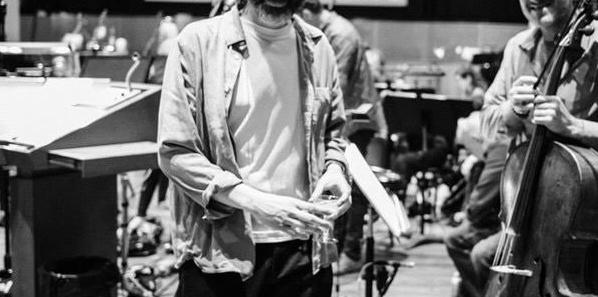

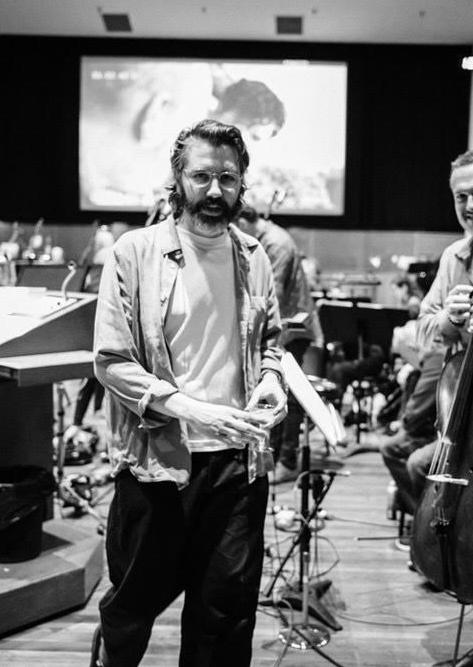
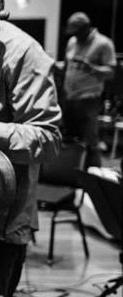


JOHN MURPHY & DAVID FLEMING
They say what goes up must come down. Superhero films have been on the ropes in recent years — since the dizzying, euphoric heights of Marvel Studios’ Avengers: Endgame and Infinity War, the second and seventh highest-grossing films of all time respectively, there has been a fairly sharp downturn in quality and ticket sales. Enter 2025’s Superman, a huge flag in the sand moment for the genre, and also the launch of a new chapter for DC under the helm of director James Gunn. Headliner speaks to veteran film composers John Murphy and David Fleming about writing the music for the latest iteration of the beloved character, tastefully using elements of the classic John Williams themes, and how Genelec monitors played a key part.
For DC, the beloved comic book franchise responsible for not only creating Superman, but also Batman and Wonder Woman, it’s been a torrid time at the movies. Even when the superhero genre was dominating the big screen and Marvel’s Captain America, Iron Man, and Spider-Man characters were printing money, DC was not able to compete. Long gone are the days of Christopher Nolan’s acclaimed and successful Dark Knight trilogy — DC’s attempts to compete with the Marvel Cinematic Universe resulted in several box office bombs, and some of the franchise’s biggest releases like Batman v Superman, and its answer to Avengers, The Justice League, were both received negatively, the latter not even breaking even at the box office.
Hence why DC is hitting the hard reset button; Ben Affleck, Henry Cavill, Gal Gadot, and Jason Momoa appear to not be reprising their capes and roles, and their associated storylines are to be dropped. The man tasked with this relaunch is James Gunn, director of Marvel’s Guardians of the Galaxy trilogy, and The Suicide Squad, one of the few high notes in DC’s recent oeuvre. Not only did he direct 2025’s Superman, but he is the co-CEO for all the DC films and shows moving forward, approving scripts
and ensuring all the moving parts are cohesive and meet a new level of quality control. It’s a lot of trust to place in one man, but Superman has so far earned over $600 million worldwide and has been received very positively by both critics and audiences.
For the big task of breathing new musical life not only into the Man of Steel himself, but also this new opening salvo for DC, Gunn brought composers John Murphy and David Fleming on board. Having cut his teeth at Hans Zimmer’s Remote Control Studios in Los Angeles, Fleming is an established name in film music thanks to his music for The Last of Us, Mr and Mrs Smith, and Damsel. Liverpudlian Murphy began his career in the UK, where his breakthroughs came in the form of Guy Ritchie’s Snatch and Danny Boyle’s 28 Days Later, the latter producing his much loved track In the House - In a Heartbeat. Having relocated to California as his career grew over 20 years ago, he recently began collaborating with Gunn on The Suicide Squad for DC and then Guardians of the Galaxy Vol. 3, the director’s final outing with Marvel.
“Within about five minutes of being in the room with a director, you either connect with them or you don’t,” Murphy says of the first time he met Gunn. His scouse accent is still intact after all his time in the States. “When I realised that he’d been in bands and he was into punk, all of those things were just clicking for me. We talked about how we both love Ennio Morricone. It was one of those perfect meetings where it felt like you got to know somebody in 20 minutes.
“I knew his work — I knew he was a brave director. He doesn’t do the obvious thing. There’s nothing generic about him.”
Murphy, having twice collaborated with Gunn, was the first confirmed composer for Superman, and got to be in the wonderful position of being
there from the very start of the film’s process and composing music that the filmmakers would edit the film to, as opposed to using temp music from another composer. As the enormous scope of the film became more apparent, this was when Fleming was brought in to add a second musical voice to the proceedings.
“I got involved in more of the second phase of the film,” New York-born Fleming says. “They had already gone off and shot the movie, and John had figured out a lot of things in the music. He’d done this great Jimi Hendrix-style guitar version of John Williams’ theme, a really beautiful theme for Clark and Lois, and a really cool theme for Lex [Luthor, Superman’s nemesis]. But it’s Superman — it’s huge in scope. There’s lots of music and lots of angles at which it can be approached.
“I got involved to approach Superman from some new angles, including finding some new ways to work with the John Williams material. We kept the DNA of the John Williams theme, which James wanted to use and invoke, but never in a direct way. He never wanted to use the same orchestration. He was asking us to kind of create a cover version, something respectful and loving, while saying, ‘Let’s not be a tribute band.’ Because it is an iconic gem of film music, as iconic as the design of the suit and the colours.”
It’s a fantastic creative decision by Gunn. Upon learning the original Williams thematic material would be used, some were understandably worried this was going to be yet another nostalgia-baiting film score, rather than taking the character in a much-needed new direction. The fear was that large passages of the Williams music from the 1978 Superman starring Christopher Reeve would be cheaply copied and pasted into this new film.

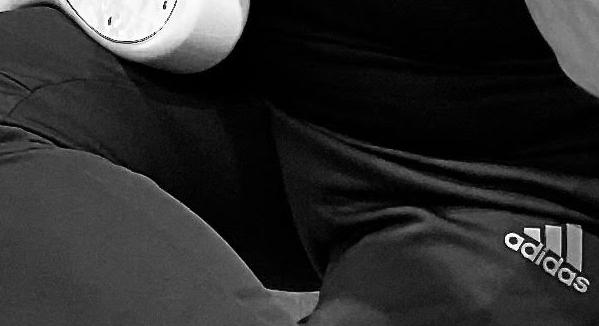

Thankfully, they chose the latter. The strongest hint of the full theme is heard at the very outset of the movie. From then on, it’s just Fleming and Murphy’s creative reworking. On Last Son, Fleming brings a brilliant, ambient take on Williams’ music, only needing the two notes from the climactic part of that beloved theme, while utilising modern production, electric guitar, and other elements. It’s music for a contemporary Superman, the score that David Corenswet’s performance as Clark Kent/Kal-El deserves. In Murphy’s wonderful romantic theme, Lois and Clark, he similarly uses the unmistakable two notes that bring us right back to the Williams theme, but used in a way it’s never been heard before, as part of a slowmoving guitar, piano, and synth piece.
As Murphy says, “There were never any conversations about just copying it. John Williams has already given us this beautiful score; we have it already. The very early process of the movie was the most fun part, because I was trying out different ways of using the motif. And, of course, there was fear around it. I thought, ‘Am I going to composer hell for this? People are going to hate me, my career is over.’ It’s like you’re handling something sacred, the holy grail for composers. But I wouldn’t have missed this opportunity for the world.”
Further pressure comes from the high stakes of the DC reboot. One of the criticisms of the Marvel Cinematic Universe is how fans have to watch every single film and spinoff show to catch every reference and cameo to keep up with what is going on. Headliner asks Murphy if he and Fleming had to bear in mind the upcoming DC schedule and introduce music for those projects.
Thankfully, he says, “When you’re working with James, it’s more about locking into his own sensibility. I didn’t sit around going, ‘Oh my God, I’ve got to redefine superhero music, because this is a whole new DC launch.’ There’s enough runway with James that you’re going to be trying a lot of new things anyway. So I knew whatever we did was going to be an untypical superhero score. I didn’t sit up at night worrying about it being this big DC launch, because when you’re the composer, you can’t really go there. There’s always politics happening in the background of any big movie. But working on the movie itself and with James was enough of a big deal to forget about that other stuff. So I didn’t really bother with worrying about whether we were setting up a new template for DC.”
All that said, there is so much more to this score than the utilisation of the 1978 theme, just as there is more to the film than Superman himself. For Nicholas Hoult’s menacing performance as Lex Luthor, with clear references to real-world billionaires, Murphy wrote a grungey synth and guitar meets full orchestra track with elements of dub in Luthercorp. For The Daily Planet, Fleming penned a fittingly upbeat, percussive orchestral piece to portray Metropolis’ bustling hub of journalism, and a bombastic, drum kit-led theme for side-characters The Justice Gang.
The characters in The Justice Gang are another great strength of the film — while previous gargantuan film franchises can exhaust audiences with needless cameos to set up a sequel or for over-the-top Easter Eggs, these characters, while providing some of the film’s funniest moments, never feel unnecessary or simply ticking boxes to keep executives happy.
“They’re not just shoehorned in there,” Fleming agrees. “I actually think they’re really important, because they’re a great foil for Superman. Not in the same way that Lex is, but in the way that they’re very cynical, they are corporate, and they have no true moral centre, as opposed to Superman. So for their music, I was leaning on some musical tropes that I usually purposely stay away from, like big rock tom drums in the context of an orchestra. I wanted it to be almost a self-aware superhero motif, as if they had requested that a focus group come up with music for them.
“Whereas James’s view of Superman is much more sincere. I think these side characters, and even Lex, are doing two things: they’re making James’s universe more colourful. And they’re also creating a dynamic with Superman at the centre — making him really distinct and unironic and allowing him to embrace the core character.”
Credit: Warner Bros
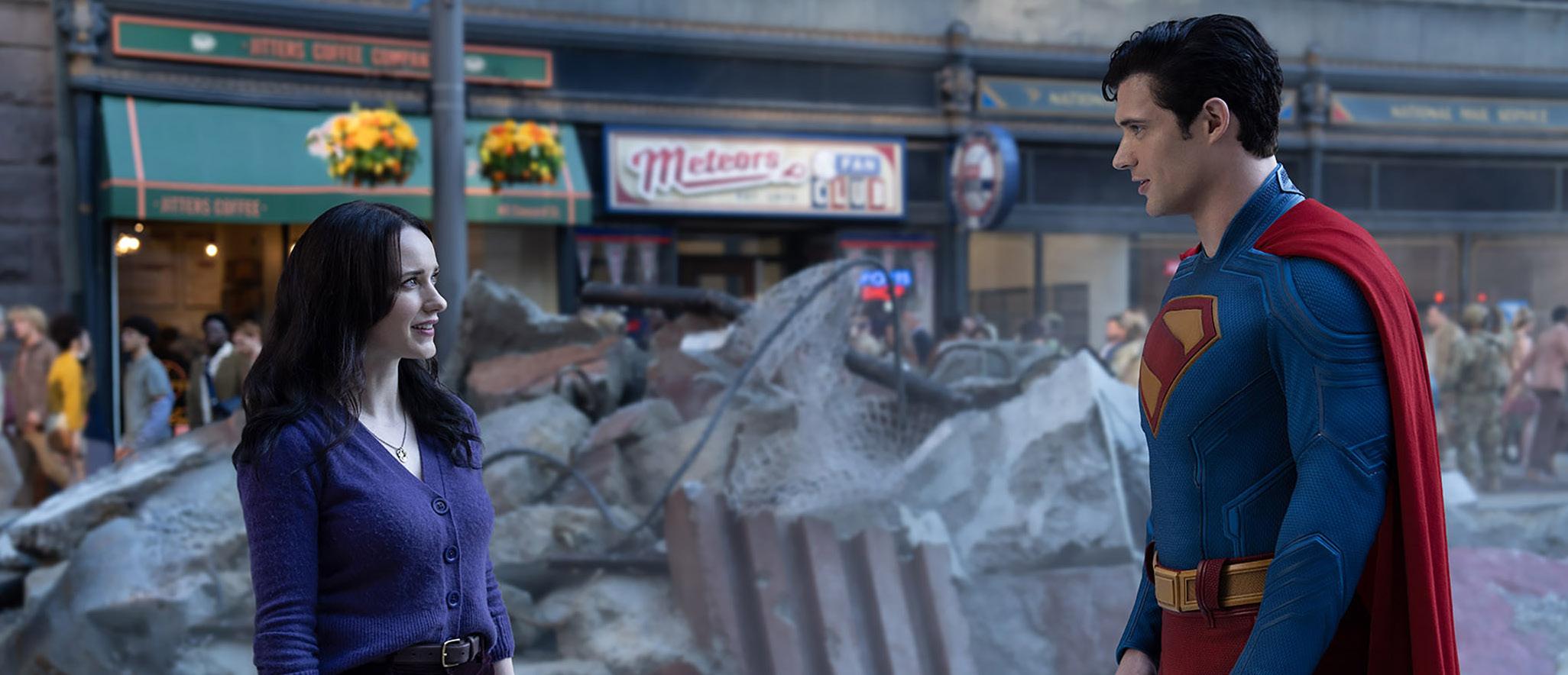
In Murphy’s studio, a vital part of working on Superman was being able to hear all the detail, his love of bass and low-end, and being able to sell his ideas to Gunn and producers. Throughout his career, it’s always been Genelec monitors that have supported him in this regard.
“I think I’ve used all of them,” he says when asked which model monitors he’s used over the years. “I’m actually looking at four of them right now. I’ve had the 2029As, 8030As — I think in this room alone, there’s eight of them. I’ve had Genelec all the way back to the beginning of doing movies. Even my daughter’s studio, Molly’s room, is all Genelec. What I like about them is that they are very, very accurate, but they don’t wear you down. We do long hours in this job sometimes, and I like having that little bit of softness to them in the high end, which isn’t shrill. For me, they’re absolutely the best monitors to work with. We even have a Genelec sub, so actually we’ve got nine [Genelecs] in this room. It’s like when you decide to support Liverpool or Everton, you’re there for the rest of your life,” he grins.
He also finds they are crucial when pitching music and cues to the allpowerful film producers working on a movie. “When you crank them
up, which you often need to do for producers, they sound a bit less flat than other speakers. They have a sweet, very high-fidelity sound. I’ve had other monitors that I liked because they were very accurate, but they got a bit hard when you cranked them up. Likewise, [Yamaha] NS-10s don’t sound that good when they’re pushed.
“What makes Genelec special is that they’ve got the accuracy you need, but they also sound great and highfidelity when you crank them up to sell something to a room full of producers. I don’t know of any other speaker that does that quite so well. I am just so used to them now; I hear Genelecs every day of my life, so it’s been Genelecs all the way for me.”
“The core monitoring system [for Superman] was Genelec The Oneswe have a beautiful white pair in here. We also used our Genelec subwoofer throughout, so we could see if we were pushing the bass too far. I like to use a lot of bass in my work, and the Genelec sub always tells us where we are straight away. We’ve had that same sub for 12 years now, and it’s never let us down.”
With the film finished, Murphy is going to take a well-earned break and visit his children, who are just starting
university in Connecticut and New York. Fleming, on the other hand, reveals its full steam ahead.
“I can’t talk about anything I’ve got going on, but I do have two previous movies that are finally coming out. Americana (starring Sydney Sweeney and singer Halsey) is a Western that’s going to come out in a couple of weeks, which I did all the way back in 2022. And I did this really beautiful romantic comedy for A24 called Eternity (starring Elizabeth Olsen and Miles Teller). It’s an amazing little film that feels like a throwback to rom-coms that I loved during the ‘90s. I think everyone’s going to love it.”
As you are reading this, there are a final handful of screenings of Superman as we head into Autumn, or you can catch it digitally at home. Either way, Murphy and Fleming’s epic and creative score is out now, and is perfect for those days when you want to feel a bit more superhero and a little less Lex Luthor.
Credit: Warner Bros


TAKE ME TO CHURCH
BODIE
Rising alt pop artist, bodie captured the hearts of millions as the runner-up on season 22 of The Voice, and has since been making waves following the release of his debut EP, HAPPY TO BE HERE, and his debut album, NO SKIPS. In this interview, he reflects on what he learned about himself on The Voice, and why bringing worship music – but not as you might know it – to the mainstream is everything to him.
Why did you decide to drop your surname for your artist name?
What’s funny is I always went by Bodie Wade, which is my first and middle name, and then I just chopped it down to Bodie for a bit of a rebrand.
What did you learn about yourself and the industry from your time on The Voice?
First of all, I had the most amazing experience on that show. I didn’t really know what to expect going in. Prepping for my first televised audition, I told them off camera, ‘I just hope I make one chair. Do you think I’ll turn one chair?’ And then I
ended up getting all four turns. I was just so shocked and so honoured to even be on the show. Along the way, I don’t know if it was the first time I realised it or if I just re-identified it, but I found I had a gift for reinventing songs. That really helped catapult me to where I am now. Not that I’m only reinventing songs, but it reminded me I’ve got a uniqueness in what I like to do and create. That was showcased on the show, and it was a really good reminder afterwards that I can write new music, be my full, unique self, and that’s been really empowering for me.
“TELEVISION IS OFTEN RELUCTANT TO INCLUDE RELIGION, ESPECIALLY CHRISTIANITY.”
You performed Brandon Lake’s Gratitude on The Voice Live Finale, and many expressed surprise that they let you perform it. Did you have any sense of there being any resistance to the song choice, or was it considered unusual for the voice to feature a worship song?
I will say, the further you get in the show, the more say you have. Not total freedom, but more input. By the end, especially if you’ve got a good relationship with production, you can be like, ‘Hey, I really want to sing this song,’ and they’ll go, ‘All right, let’s see if we can make it happen.’
By the time you reach the live shows, it moves fast. You’d get off stage, find out if you made it through, and then go straight into a night rehearsal for the next week. It was non-stop. I remember two weeks before the finale, I heard the live version of Gratitude that had just come out, and I thought, ‘Wow, this is an incredible song. I’d love to perform this on the show.’ I emailed the executive producer on the music side and said I wanted to do it for the finale. He pushed back, which was fair.
I understand television is often reluctant to include religion, especially Christianity, and I wanted to respect that point of view. But I told him I wanted to do this song, and that they’d had gospel artists perform gospel songs – so I think it’s fair for me to sing this. Two days later, he texted back saying, ‘We got it cleared, you’re good to go. So I had to push a little, but I got the song, and I’m really glad I did.
Would you recommend going on a show like this to other emerging artists?
I always say this to anyone thinking about going on the show: The Voice is not your big break. It can be an amazing experience, or it can be a terrible one. I’d hope it’s amazing, it was for me, but it’s not your big break. What it is is a magnifying glass on what you’re already doing. So whether you’re planning a music career after, or just looking to build your platform, you need to be on point while you’re on the show, because that’s when all the eyes are on you. I knew that as soon as I left, there’d be a drop-off. People would start following the next season’s contestants.
My goal was to hold onto and build real relationships with as many fans as possible – the ones who connected with my story and my music.
Coming off the show, that first week was actually a bit traumatising, not to be dramatic. I’d just spent eight weeks away from home, and I’ve got a wife and kids, so coming back after all that time was overwhelming. Add to that I’d just sung on the finale of a TV show I never even thought I’d get onto, it was a lot of emotion all at once. On the career side, I came home to a lot of buzz and had to figure out who I wanted to be postVoice. How do I build and keep those relationships with fans, while also stepping away from being “the Voice guy”? It was a lot to process, but I’m really pleasantly surprised with where I’ve ended up.
Your EP, HAPPY TO BE HERE features whisper and the wind, which tied for No. 1 Most Added at AC radio in its debut week. What inspired this song?
I could talk about this all day, but I’ll try to keep it short. I wanted to write a song about God in a way that’s digestible for all kinds of people. I’ll put it like this: I think many people have moments with God that feel groundbreaking. Growing up in the church, I’ve seen some incredible things: people healed, deaf ears opened, and cancer healed. Real mountaintop experiences. But I think when we’ve seen God move in a certain way, and then he doesn’t move or “perform” like that again, it’s easy to get frustrated, to question if he’s really there, or even if he exists at all.
So I wanted to write a song that says, “Hey, just as much as God is in the wind, in the big moments that shake and change things, he’s just as present – maybe more so – in the whisper, in the silence, in the relationship you build with him in the quiet place”. In short, that’s what the song’s about. I wanted it to be as honest as possible, while still celebrating the fact that God looks many different ways and moves in many different ways.
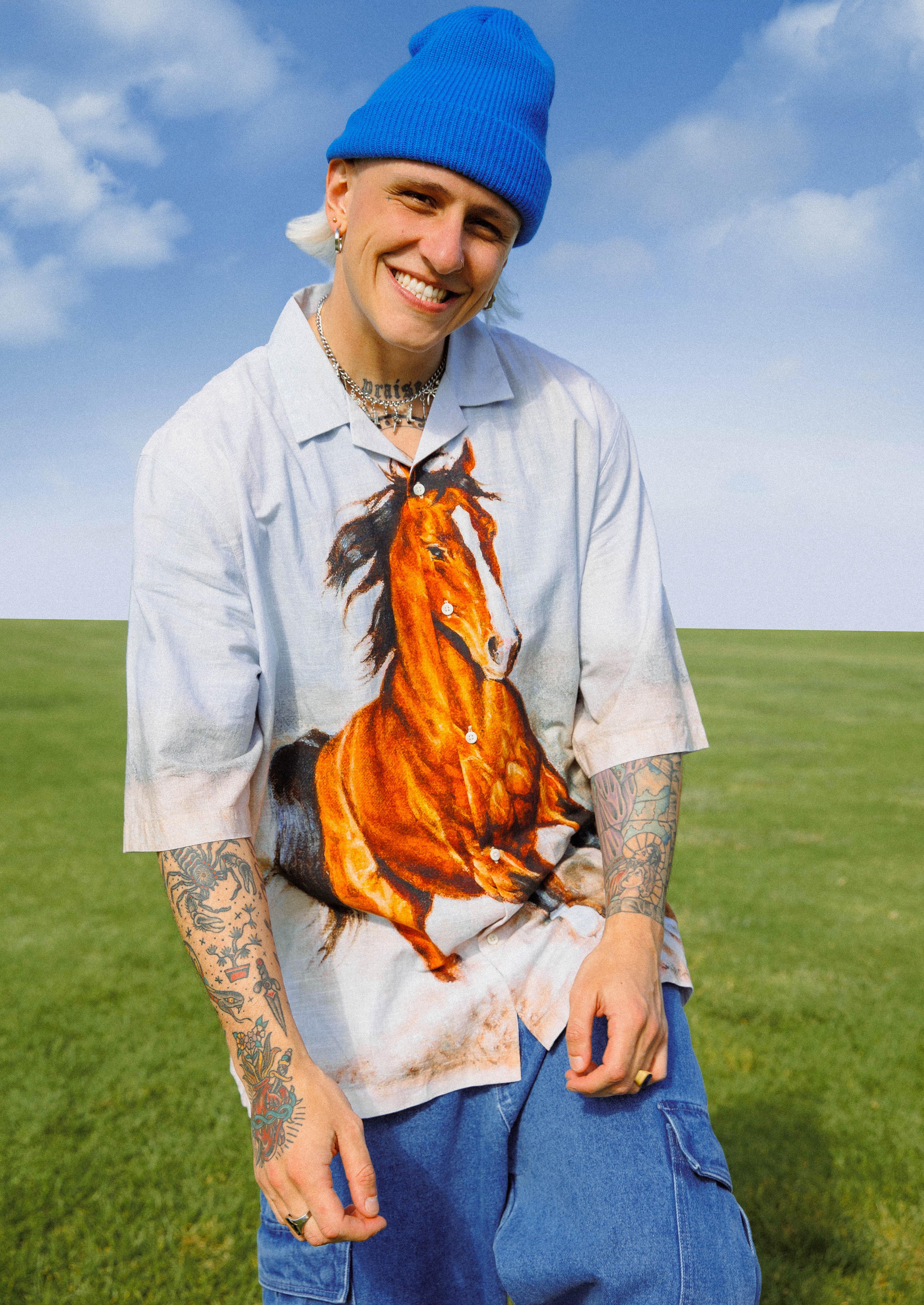

When it comes to your faith, how important is it to reflect that side of yourself through your music?
It’s everything. Before The Voice, I’d lead worship at my church on weekends, but during the week, I still lived my life that way. My songs were aimed at all kinds of people, and I kept the lyrics clean, talking about things that honoured God and my wife. But I didn’t really set out to express my beliefs in my music, because I felt the only way to make music for everyone was to keep it like that. Now, where I’m at, it’s really important to me.
I’ve reached new heights, and I’ve been able to connect with more people of different beliefs than ever before by making music about who I am and what I truly believe. At this point, it means everything to me to be able to do that.
Do you think there’s a certain way people expect ‘worship songs’ to sound? How do you seek to challenge that with your music and with your hip hop, pop and rock influences?
Totally, yeah. The biggest honour of coming out as a Christian artist on a Christian label is that, weeks before signing, I told them, “Look, if you want just another Christian radio guy, I’m not that. I’m not going to sound like that. Is that okay?” I said I’m happy
to partner if they’re down to let me collaborate with others who are trying to innovate this space and create new sounds, and they said yes. Now, seeing one of my songs climbing the charts is pretty nuts, because that wasn’t really the goal. The goal was just to create music true to who I am and to be unique. So it’s an honour, and it’s really exciting to see the needle moving. Christian music is growing faster than any other genre right now, and it’s really cool to be part of that.
Your song, KNOW from the EP, is one that means a lot to you in particular. Why is that?
That song is special for a few reasons. On a practical level, it’s the only song on the EP that was written before I signed with my record label. I wrote it in my home studio with my close friend Aaron Ferrer. We were both going through similar seasons of really not knowing what our purpose was and desperately wanting clarity, so we didn’t waste time or chase things we shouldn’t.
It was a song born out of desperation, written at home and produced entirely by me. It sat in a folder of demos that I never thought would be released – just a heart-cry song. So when my label heard it and wanted me to release it, I was surprised, excited, and honoured. Out of the six songs on the EP, it holds a very unique place in my heart.
What equipment do you have inside your home studio to produce your own music?
My JBL 305P MKII powered studio monitors are sick. I’d never used JBLs before, and I’ve got some bigger speakers that’ve been buzzing and giving me trouble lately. I’ve had them forever, so I was really excited to try the JBLs. I’m stoked. They’re compact, tight, and the sound is super clean, which has made mixing really easy.
I use an AKG P220 mic, and it’s great – super clean. What’s funny is I’ve actually been using it more recently. I’m producing a project for a university right now, an acoustic project, and we recorded all the acoustic guitar tracks with that mic. It sounded amazing; I was honestly shocked at how good it was, just miking an acoustic guitar. Also, I’ve been using K240 MKII headphones for five years, so I was super excited to get the new ones. I love the new colours too – different from my old pair – but man, they’re my favourite for tracking. Comfortable, great sound – I just love them.
bodie’s debut album, NO SKIPS is out now.
BODIE.LIVE

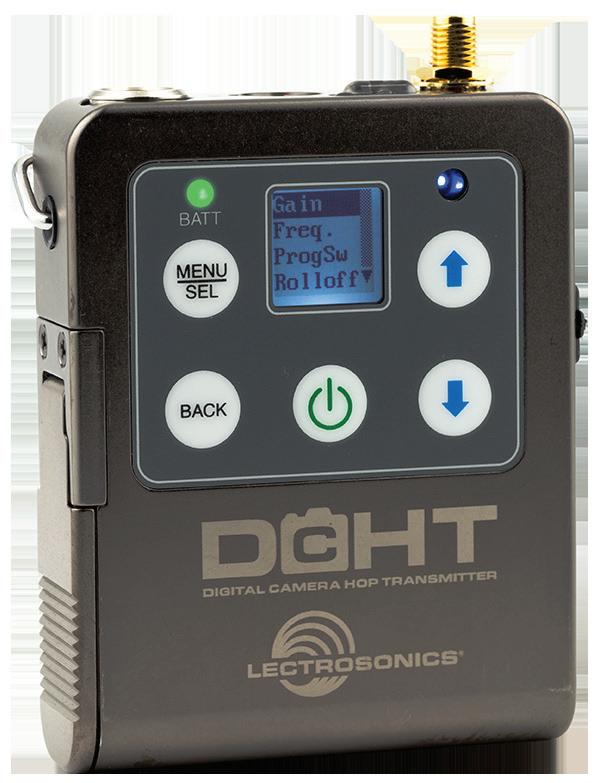



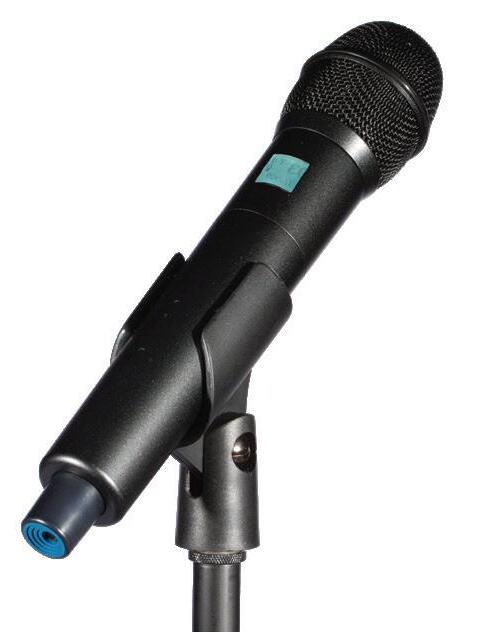



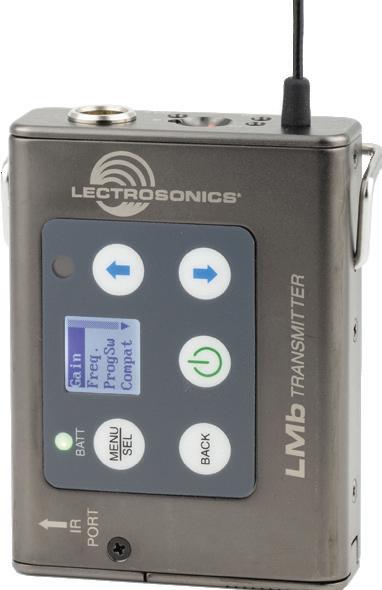


ONSTAGE HAIRCUTS AND NEW ALBUM ‘OCTOPUS’
NEWTON FAULKNER
If there’s one way to announce your return to releasing music after several years away, it’s having your waist-length ginger dreadlocks shaved off completely while performing on stage in London. And besides that physical reinvention, Dream Catch Me singer-songwriter Newton Faulkner returns with a new album, OCTOPUS, an album that defies genres and any concept of the folk-indie sound he broke through with almost 20 years ago. His debut album topped the UK album chart, and Dream Catch Me reached the UK top 10 singles, achieving a pinnacle of commercial success you wouldn’t usually expect from a dreadlocked folk singer. Faulkner chats to Headliner about why he is more committed to making the music he wants to make than ever before, and why trying to replicate that commercial high couldn’t be further from his mind.
Faulkner’s upbringing saw him immersed in the arts from a young age. He was privately educated in Bletchingley, Surrey, and later enrolled at the Italia Conti Academy of Theatre Arts, during which time he grew his famous red dreadlocks. He went from a Green Day cover band (fittingly, he would be cast in the Green Day
musical American Idiot years down the line) to his first band proper, Half A Guy, a funk rock group. Following their split, he began writing songs and performing as a solo singer-songwriter.
Within the space of around three years, Faulkner went from writing his first solo material and debut performances to performing on BBC Radio 2 and signing a publishing deal, which kicked the PR machine into gear for him. This led to his first record deal with Sony BMG and the release of Hand Built By Robots in the Summer of 2007. He would also secure some of the most coveted support slots for a singer-songwriter available at the time, touring with Paolo Nutini, The John Butler Trio, and John Mayer.
Besides the album itself topping the charts and going double platinum, it also contained the single Dream Catch Me, which not only hit no.7 on the UK singles chart, but remains Faulkner’s biggest, signature tune. It’s not difficult to hear why, with its wonderful lyrics and sing-along chorus, while showcasing his vocal and acoustic guitar abilities. Also popular to this day is his strippedback cover of Massive Attack’s Teardrop, the fourth single on the LP. The UK festival bookings came flooding in, and he has since become one of Glastonbury Festival’s most frequent performers.
Faulkner, who is doing the odd interview while on holiday in Spain, begins the call by reflecting on that hectic time in his career. “I managed not to find it that overwhelming at the time,” he says. “I think when it first started going really mental, I had a word with myself: ‘Okay, stuff’s about

to get pretty weird. What do we want to keep hold of? What do we want to not lose? What do you want to be in all this, and what do you love about doing the work?’ Okay, so let’s just focus on the work and not get too swept up in everything else.’ Which I think served me relatively well. There are things that I wish I’d celebrated more, really. Because I’d just think, ‘Yep, that’s ridiculous. I’m just not going to take in the insane thing that’s just happened. I’m just going to go back to work.”
With that in mind, Headliner then asks Faulkner if it’s correct to assume he didn’t get into all this for chart successes, moments of fame, and everything that comes with that. It’s very tricky to imagine him glancing over his shoulder to see if the paparazzi are following him. And he now has his head shaved bald, so even if they were to, they no longer have his instantly recognisable hair to make their lives easier.
“I just like making music,” he confirms. “Now I’m trying to crowbar making
music into the other bits that take up a lot of my time that aren’t necessarily directly related. Social media is obviously a huge part of the job now, and it didn’t even exist when I started. It’s like the whole landscape has completely shifted. So I’m trying to fit music into all the other bits so it can feel like it’s all part of the same thing. I talk to a lot of artists — there are some very disjointed feelings. People feel like they’re doing social media all the time, instead of the music, which should be the most important bit.
“But even what’s the most important bit is totally being questioned at the moment. I was recently at a music event, and someone was talking about the hierarchy of importance. They said that actual music was number four. I was like, ‘Are you kidding?’ But I don’t think they’re wrong. I think I just don’t like it. This whole thing about it being personality first, and then eventually the music comes into it. Whereas I’m very much music first, everything else second.”

Which makes for a humorous transition into his on-stage haircut — what could make for a better social media viral moment than having your immense dreadlocks, grown over decades, shaved off in front of a live audience in London? On the last night of his November 2024 tour, during his rendition of Dream Catch Me, Faulkner’s sister walked out onto the stage with an electric shaver for the presumably challenging task of removing each giant lock. Unsurprisingly, he wasn’t merely doing this for the ‘Gram, instead, raising money for the Teenage Cancer Trust.
“It was right in the middle of the set, which made it so much stranger,” he explains. “My sister walked out with a shaver and just started shaving my head while I sat and played. So by the middle eight, I was completely bald. And then for the next 45 minutes, I was the only
person in the room who had no idea what the shape of their head looked like. But we raised a lot of money for Teenage Cancer Trust, who I’ve worked with for years and years and years. They were one of the first charities I got involved with 20 years ago. They do incredible things.”
Following this physical reinvention, the lockless Faulkner then underwent a creative reinvention with the release of the single Alright Alright Alright featuring the Bloom Twins. Anyone who had been hoping for another BBC Radio 2-friendly track in the Dream Catch Me vein may have been left disappointed — it’s one of Faulkner’s grittiest indie rock tracks yet. The acoustic guitar is set aside, with a swirling electric and bass guitar riff, while Faulkner sounds like a man possessed with a megaphone.

“IT WASN’T ‘WHAT WOULD NEWTON FAULKNER DO’ AT ANY POINT.”
He reveals that he “Was just messing around. I had to get it out of my head and into the machines, and I didn’t think anyone else would ever hear it at all. It happens quite a lot; I’ll have this idea that I’ve got to do, so I’m just going to do it. And then if anyone ever hears it, great. And if they don’t hear it, it’s fine, because what I needed to do was stop it going round and round in my head relentlessly, until it’s kind of unpacked. And then when I started playing this idea to people, I was so shocked by everyone’s response. It was actually my 14-year-old who listened to it on headphones. He listened from start to finish on the train, on the way home from school. He took the headphones off, put them in his lap, looked me straight in the eyes, and said, ‘Father, that’s the best thing you’ve ever done. Well done.’ That’s a win. My 14-year-old is not easily impressed.”
Hunting Season, another single and great highlight from the new album OCTOPUS, keeps up this record’s fiercely independent spirit. The guitars are fuzzy, the grooves are funky,
and it features heaps of percussive instruments to create an almost Carnival atmosphere. It’s also the second moment on the LP with strong features, this time from Lissie and Los Bitchos. Faulkner reflects on how allowing the album to become what it wanted to be, instead of trying to fit it into some preconceived notion of what a Newton Faulkner album should be, was key to producing the LP that is out now. It also explains the tentacled title of the record. “I had just finished making it as the window cleaner arrived, and I was like, ‘I’ve just finished making an album.’
“He asked me what kind of album it is, and I said, ‘Oh…oh…that’s a really good question.’ I think what makes it interesting to me is the fact that it wasn’t, ‘What would Newton Faulkner do’ at any point. It was, ‘What does this piece of music want to be? And how can I help it get there?’ So, if a song wanted to be heavy, I’d make it heavy. If a song wanted to have a vocoder choir, let’s do that. I’d never done that before, and I’m still working it out. It
was me getting out of my own way and letting things be what they want to be. Which is why it ended up going in so many different directions. Because there was no one taming it or trying to make it fit in a box. That’s why the octopus analogy works so well for it.”
OCTOPUS is out everywhere now, and you can hear the album’s brandspanking-new sound as Faulkner sets off on his October UK and Ireland tour. If you were hoping a live haircut would make up part of the set, he no longer has any hair for that purpose. But you can hear his brilliantly multi-faceted new tunes live, as well as songs from his 20-year career.
NEWTONFAULKNER.COM

Words by ALICEGUS T A NOSF
$OME $PECIAL $HOWS 4 U TOUR
DRAKE
Drake isn’t just performing on his $ome $pecial $hows 4 U Tour – he’s putting in the miles. On the European leg, the superstar both opens and closes each night, framing co-headliner PartyNextDoor with his own high-energy sets. And the production matches the ambition: a massive ring-shaped stage encircles the crowd, with walkways stretching across the floor and larger platforms at either end of the arena. Headliner discovers how a pair of DiGiCo Quantum852 consoles are providing pristine audio and flexible operation while acting as the timecode hub for the entire production.
Drake typically performs across all the stages during a show, turning each concert into a full-scale marathon. Keeping pace behind the scenes are a pair of DiGiCo Quantum852 consoles, linked through an Optocore network with three SD-Racks and an SD-MiNi Rack, all supplied by Eighth Day Sound, a Clair Global brand—ensuring the sound is as seamless as the spectacle.
“The Quantum852 is extremely flexible,” states tour monitor engineer Chris Lee. “Whatever we need,
whatever anybody requests, I can do it. It’s the Swiss Army knife of consoles.” In fact, it’s that in more ways than Lee had expected.
For instance, in addition to mixing monitors for the complex production, his Quantum852 is also managing SMPTE timecode for virtually the entire show.
“We’ve had a few issues with some of the video, automation, and pyro and lighting receiving timecode from one of our sources, so, instead,
I receive it digitally,” he explains. “I’m able to output it as analogue and send it to our lighting controller, who then distributes it to multiple different departments in my area, over our Optocore network. It’s been saving the show! With this new console, DiGiCo has definitely worked on the timecode input and output and made them even more valuable.”
“WHATEVER ANYBODY REQUESTS, I CAN DO IT. IT’S THE SWISS ARMY KNIFE OF CONSOLES.”
In yet another example of the features he’s been utilising, Lee sends the talkback comms signals through the console’s Mustard processor, specifically through the MSE (Mustard Source Enhancer), a new dynamics processing feature available on Mustard that is designed to reduce unwanted background noise and provide more gain-before-feedback for selected audio sources.
MSE really came in handy for Drake’s stage design.
“Our show is in the round, and the entire time that the artist is performing, they are in front of the PA system,” Lee explains. “Front of house and a lot of the other technical positions are in front of the PA, and so MSE reduces the level of ambient noise and enhances what the people are actually saying, versus just having a bunch of ambient noise when they open up their mic to talk.
So it really helps with speech intelligibility, and that ensures that everybody can be heard.”
Drake has another distinction, and that is that he was officially the very first artist to take a new Clair Global-supplied DiGiCo Quantum852 console out on tour, for last year’s It’s All A Blur Tour –Big As The What?.
FOH engineer Demetrius Moore is also using the MSE, in this case on vocals, in combination with effects such as a BAE 1073MPL mic pre and an Avalon VT-737 tube mic pre for Drake’s Sennheiser 9000 mic. Combined with the DiGiCodistributed Fourier Audio transform. engine, a Dante-connected server designed to run VST3native software plugins in a live environment, he has everything he needs to manage a physically spare but dynamic and complex production, complicated by the need to manage gain-beforefeedback.
“The problem is that everybody’s in front of the PA almost all of the time,” he says.
The solution for FOH is the application of MSE along with applying the Quantum console’s Chilli 6 six-band, dynamic, multiband compressor/expander and Avalon VT-737 to Drake’s mic tube processor, pulling back on sensitive frequencies while levelling the gain.
“The MSE is the only thing I’ve added since the last tour, but I keep on finding new ways to use the Quantum852, because there’s so much in there,” he says. “It’s an amazing platform.”
DIGICO.BIZ

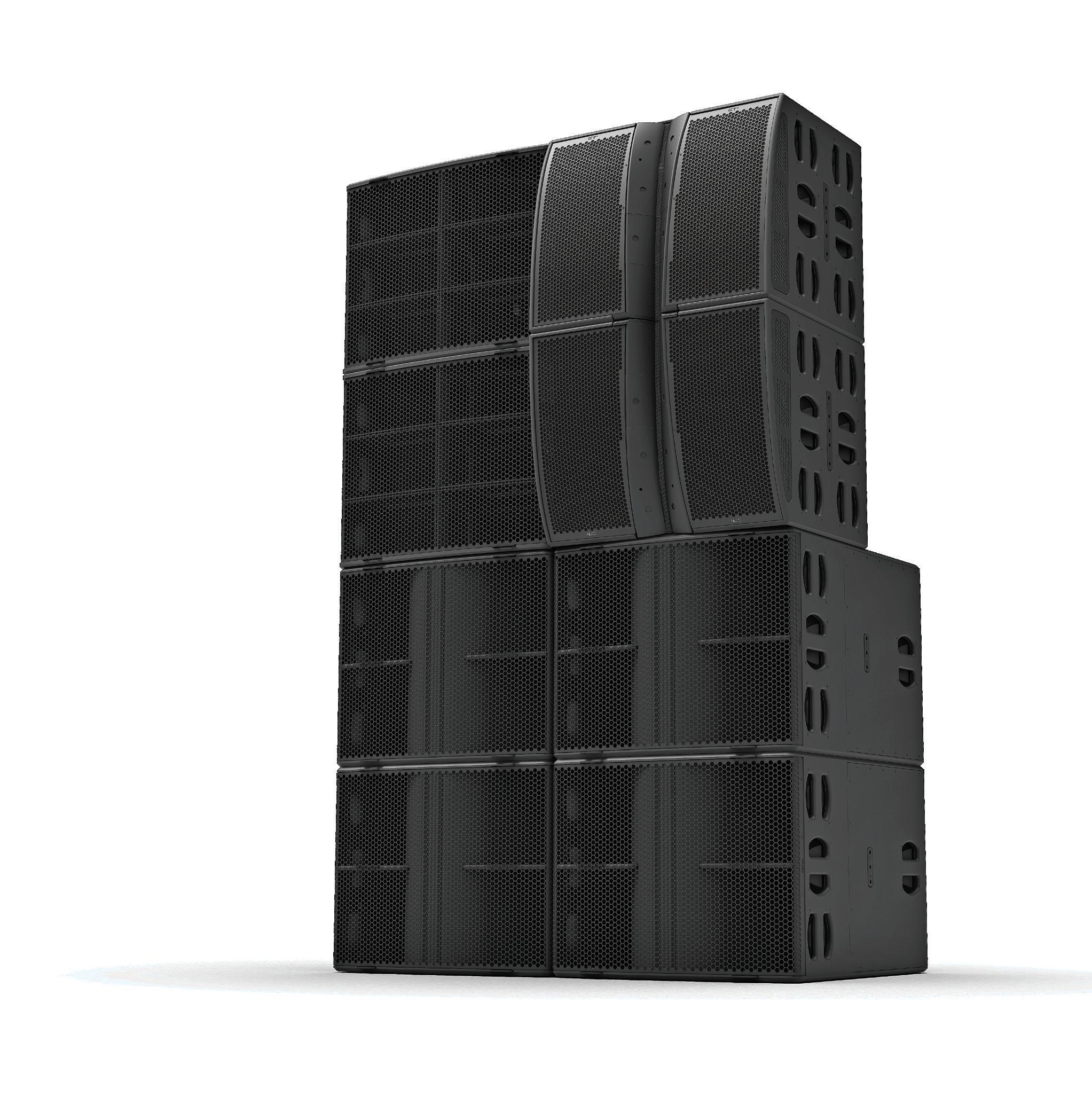
HIGH POWER, HYBRID SOURCE SOUND REINFORCEMENT
Shaping the Future by Celebrating our Past
Three decades on and NEXO Alpha systems are still thrilling live music audiences and clubbers with their characteristic power and presence. Now we’ve drawn on the spirit of that ‘90s classic to create Alpha +, a ‘three-box’ FOH system that combines the benefits of line source coupling with the easy deployment of point source speakers.
Stacked on a mid-sized festival stage or installed in a club, it’s all Alpha, reimagined for the modern age.
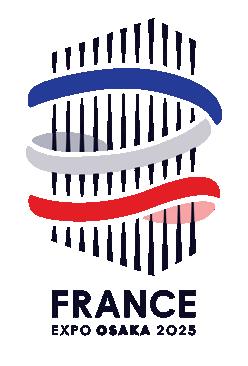
nexo-sa.com
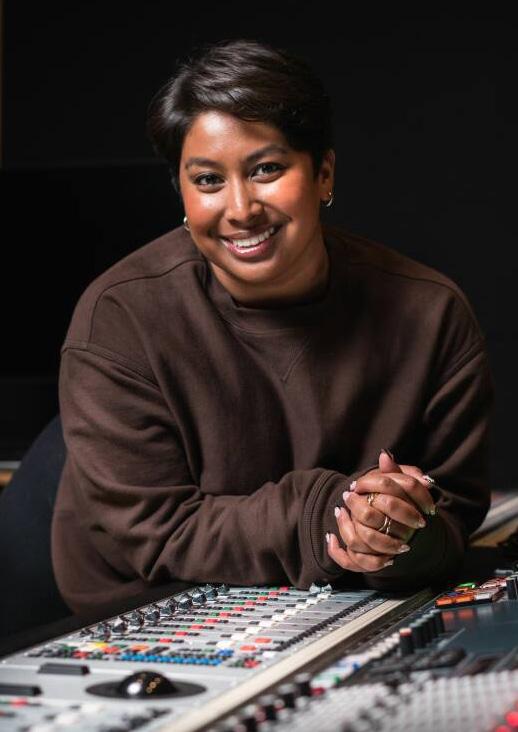
Credit: Jake Elsegood
VOCAL PRODUCING JADE AND ASSISTING LITTLE MIX
RAMERA ABRAHAM
Trained at the Abbey Road Institute, Ramera Abraham is a Londonbased vocal producer and engineer who quickly rose from the ranks, from a studio runner to working with Little Mix and now being JADE’s go-to vocal producer. After graduating from Abbey Road, she underwent an engineering residency at Spotify, with a mentorship from the Berklee College of Music. She speaks to Headliner about her career breakthroughs, her experiences of establishing herself as a female in the industry, and how she ended up rubbing shoulders with pop stars.
During her time at Spotify, Abraham found herself working with the likes of Mr. Hudson and JP Cooper, before landing a spot as an assistant engineer at the legendary Metropolis Studios in London. Her CV further blossomed here, being part of sessions with some of the UK’s biggest artists, including Adele, Jess Glynne, Nick Cave & Warren Ellis, MNEK, and Sam Fender. Crucially, this is where she met Little Mix, and the group’s breakout solo star JADE.
How did London come to be the city where you first started pursuing the world of music engineering?
I came to London on holiday, just to visit some friends. I wanted to go to Abbey Road Studios and take the picture crossing the road, like everyone does. I had a stroll around the Abbey Road shop, and I stumbled upon a brochure for the Abbey Road Institute. I read the description of what the programme entailed. I did a little bit more research when I went back to Canada about what music production was and what sound engineering was, only to discover this whole world of options that were available to me as someone who’s
always been musically inclined but didn’t really feel like she fit in yet. I applied and I got in. When I sat in the classroom on that first day, I felt so at home with the other like-minded people who were in the course with me. It was such a beautiful thing, I truly felt like I was right where I belonged on that first day.
You’ve spoken previously about how engineers would come in and give guest talks, and that was when you first realised there is a big lack of diversity in the world of audio and engineering.
When I first saw the guest lectures at the institute, that was when I realised the lack of diversity in the field. It was more so that I just didn’t see myself reflected in these very successful engineers and producers who are amazing in their own right. And the people I would see highlighted in interviews online, I didn’t see myself reflected in those people either. And this was 2016, not that long ago. I do think the landscape has changed drastically now, but it was my first exposure to that, and it became the main motivating factor behind why I want to be the best and why I wanted
“JADE IS WONDERFUL. I LOVE EVERYTHING SHE STANDS FOR AS AN ARTIST AND AS A CREATIVE.”
to continue down this particular path and have a niche in vocal production. I’m doing it for the girls.
You were briefly a runner — I take it you weren’t a big fan of making people coffees?
At that time in my career, I’d just done my degree. I was ready, and I was hungry to do sessions. But I didn’t understand why I couldn’t just be dropped into a session. Obviously, now I get it. But at the time, I was impatient. I wanted everything quickly. But being a runner is vital for your understanding of the hierarchy within a commercial studio. It’s not the only route into the industry, I believe, but it was how I got my start, for sure. My first job was actually engineering in a residency with Spotify, which was based inside Metropolis. And when that residency was over, I made a point of trying to connect with other engineers and other assistants who were working at Metropolis that I would see every single day. I wanted to increase my technical knowledge of engineering. I wanted to assist with large sessions with big setups. And I pitched myself to come into the role of an assistant engineer, but obviously I had to start as a runner, which I did for six to eight months, and then I started assisting after that.
How did you eventually make the decision to become freelance and leave Metropolis? That must have felt like a pivotal moment for you.
Oh, yeah. That was really stressful. It’s a big step for anyone in the industry to make, because your success is not guaranteed. I was on a zerohour contract, so I realised that even though being an assistant felt like the most full-time job ever, the contract didn’t guarantee me anything. So I had to really frame things like that in my mind in order to make that big step. I also had the very wonderful opportunity to start as an engineer at Platoon. It was around this time that I started developing my vocal production identity, when I was just
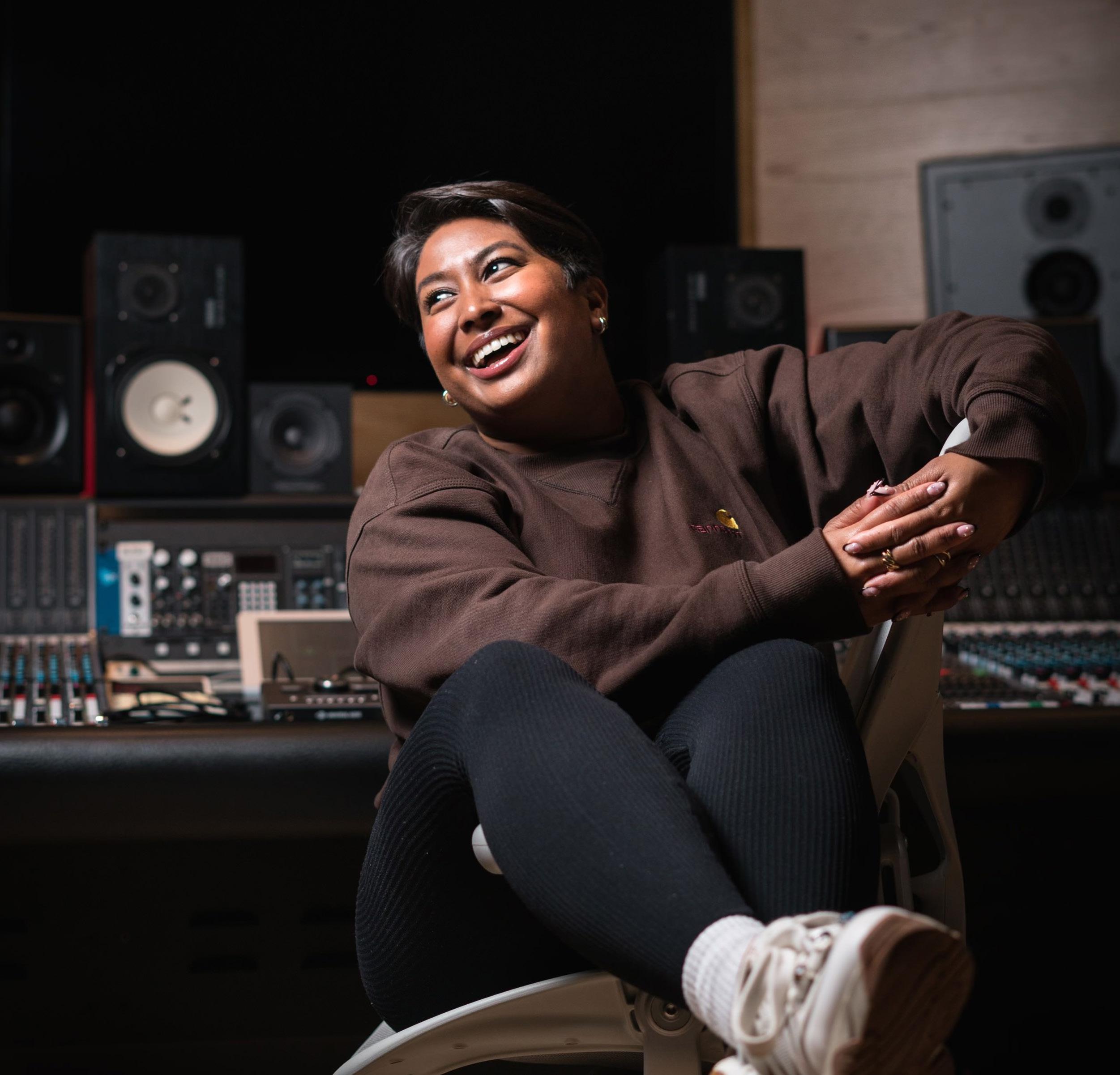
loved that, and I felt that there was a big shift in energy when a lot of the creators were women.
JADE is wonderful. I love everything she stands for as an artist and as a creative. I think what she’s doing is different and special. I always felt like
People will be dying to know what it’s like working with JADE — please spill the beans! leaving Metropolis. That was around the time that I was assisting Little Mix and their last two albums, Confetti and Between Us, with Paul Norris, the head engineer at Metropolis. I had never felt so at home in a room than I did when I was on the Little Mix sessions, because I was in a room surrounded by creative women, female producers, and allies who support women in the industry. I
I connected with her the most out of the four Little Mix gals. I had a feeling we could have a special creative connection, if that were to ever come to fruition, which it didn’t for a while. I felt so removed once I left the studios. I thought she was not going to see me, and that would be inaccessible now. But I ran into her at a gig, and she was like, ‘Babe, I’ve seen that you’ve been vocal producing.
Credit: Jake Elsegood

Let’s work.’ I was so shocked that she knew what I was up to. It’s such a testament to first impressions when you’re working at a studio, and that it doesn’t matter what role you’re in. I was only a runner, and then an assistant when I was in the room with her at Metropolis. But I was still able to make an impression on her, and eventually, when my career caught up with me, we were able to work together on her solo stuff.
microphone, and my mic of choice would be a Telefunken ELA M 251 microphone. It suits a particular type of higher register pop vocal. We have a 251 at Platoon, and there are Sony C-800G mics at most studios where I go. I mainly use the C800G for vocals that need to capture a lot of the punchy transients, so any rap vocals or melodic rap stuff.
I know you’re in the middle of moving studios, but could you share your current setup? RAMERA.CO.UK
I’m using a Prism Sound Lyra 1 as my interface. I bring that to many
sessions where I’ve had to have a mobile setup, and I don’t even bother bringing a preamp or a compressor. The preamp on that thing is amazing. When I go to other studios, I’m requesting a Neve 1081 or a 1073. I only EQ on the way in lightly. I’ve got a Tube-Tech CL 1B compressor at home, and I bring that one around with me if I need to. It’s going to be on a vocal regardless of whether or not I’m using a second compressor. That’s my core chain. In terms of monitoring, at home, I’ve got Neumann KH120s and Yamaha NS-10s. I’m using the Platoon Studios, where we’ve got ATCs. At home, I’ve got a modified U47 Neumann
Credit: Jake Elsegood
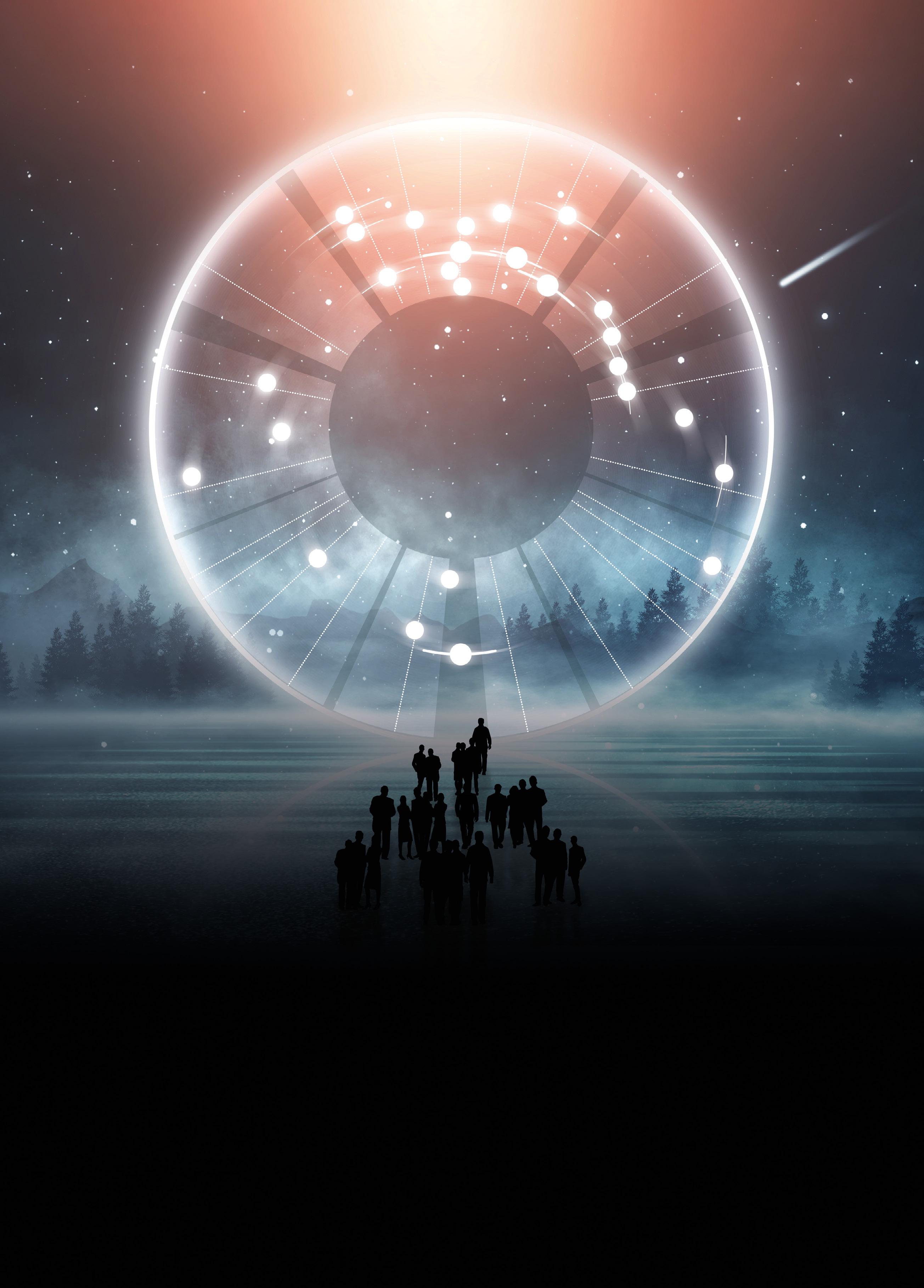
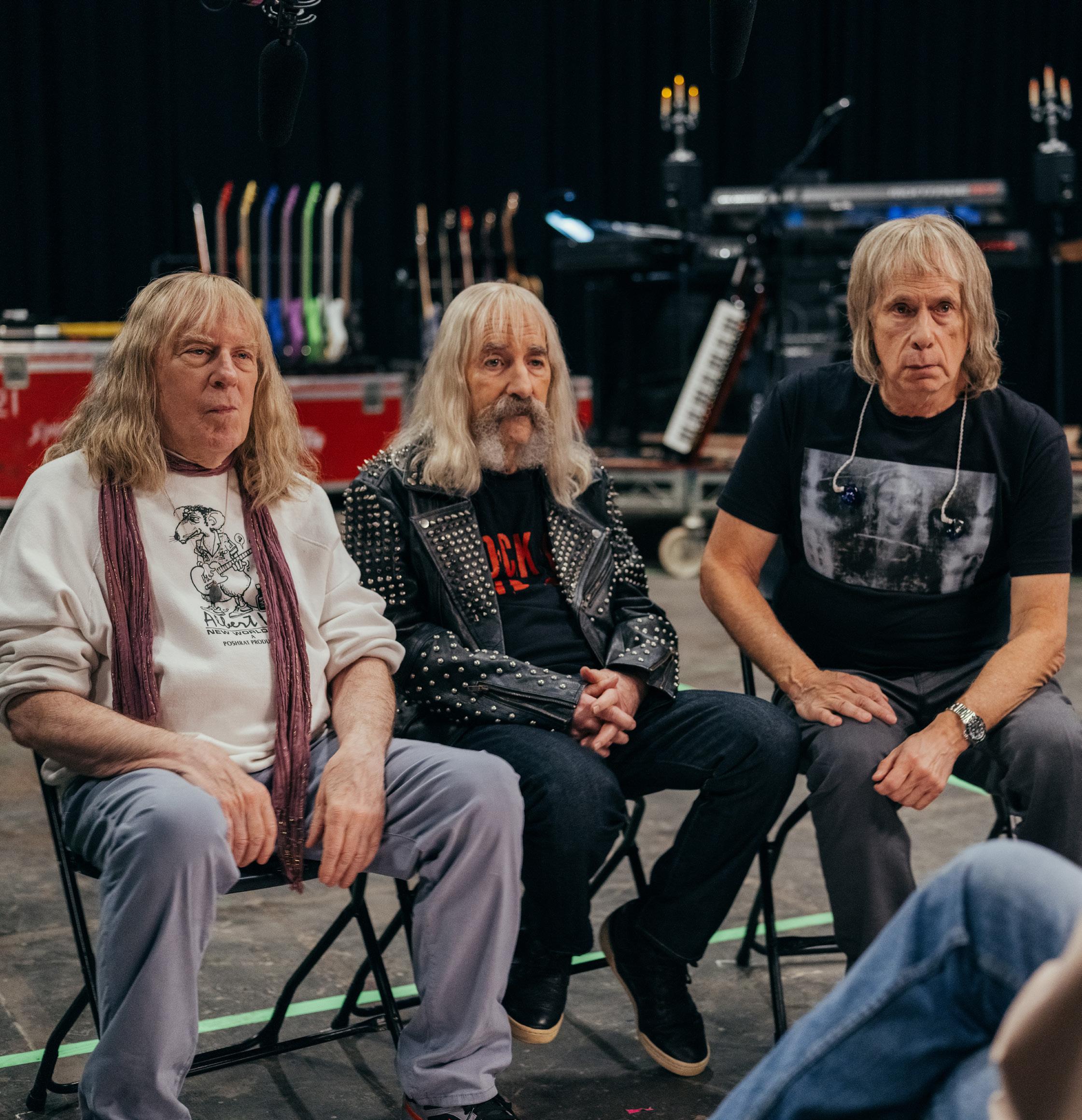
SPINALTAPII
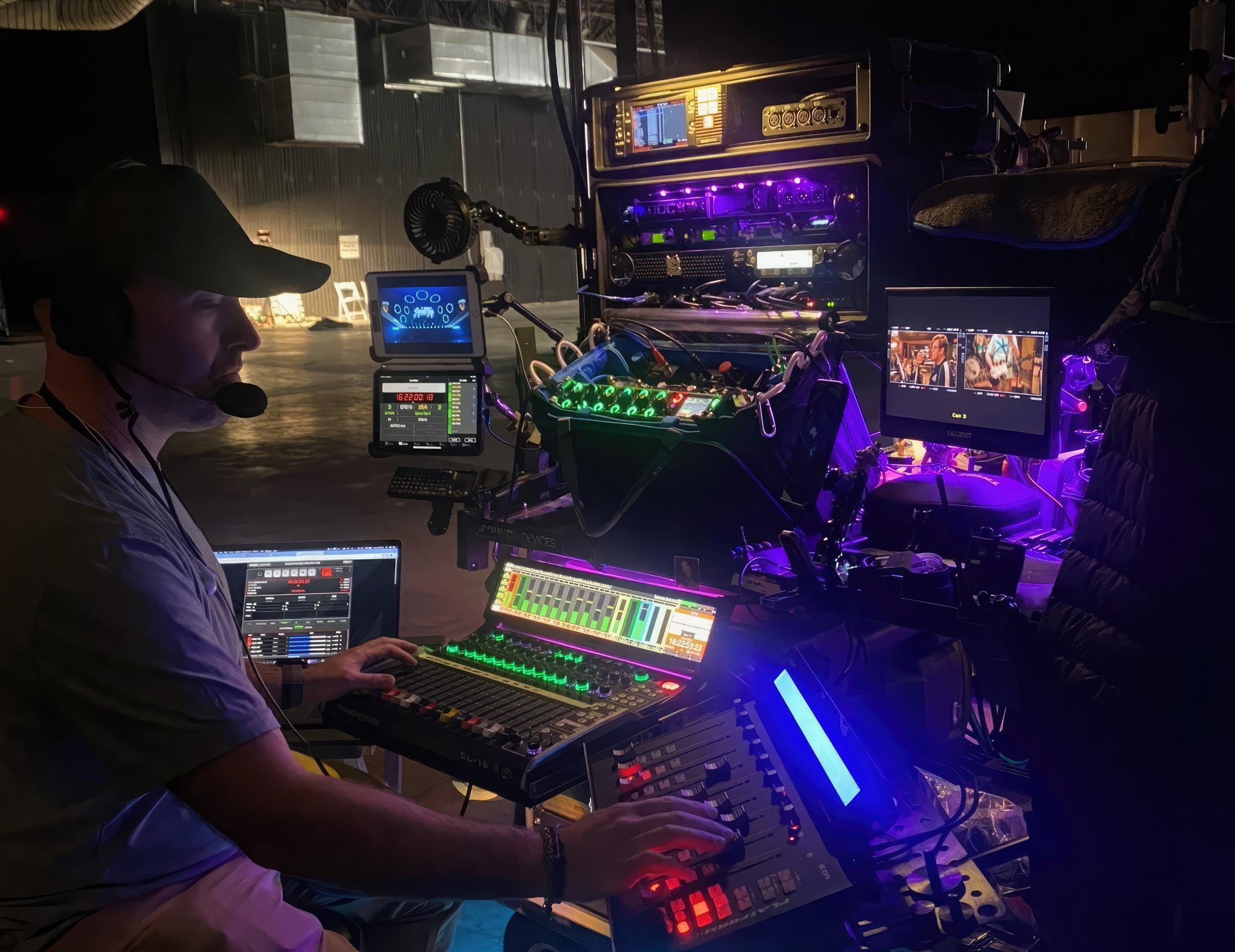
The highly anticipated follow-up to the 1984 mockumentary, This Is Spinal Tap, Spinal Tap II: The End Continues has arrived in cinemas. As a fan of the cult classic, working on the film was a dream come true for Emmy-winning production sound mixer Chris Welcker, who reveals what it was like to capture the audio for “one of England’s loudest bands”. Thankfully, due to his array of Lectrosonics wireless technology, his review of the way his kit handled the unprecedented audio challenges onset is considerably more favourable than that of the parody band’s album, Shark Sandwich.
Welcker was hired by director Rob Reiner for his deep understanding of music-centric film productions, such as Daisy Jones & The Six and Bill and Ted Face The Music; however, Spinal Tap II proved to be one of the most challenging projects in his career.
“The most unique aspect of this project was the script,” he reveals. “It was only 10 pages long, just a rough outline, with minimal dialogue; it was mainly descriptions of situations and locations.
“We didn’t know who would be in each scene or how many people we’d be dealing with. This was all unusual for a movie. Early conversations emphasised being ready for anything at all times, which could vary significantly depending on the circumstances
“In addition, the actors were performing the music live, rather than pantomiming to pre-recorded tracks,” he points out. “They could play or do anything. Suffice to say, my recorder had to handle an insane number of tracks at all times.”
Despite the band’s temporary manager famously declaring in the
1984 original that, “You don’t do heavy metal in Dubly,” (mispronouncing Dolby), Spinal Tap II: The End Continues features Dolby Atmos sound. One can only imagine what This Is Spinal Tap’s Jeanine Pettibone would have to say about the band getting the immersive audio treatment.
With Atmos in the mix, Welcker knew the film’s audio had to be top-notch across the board. To master the film’s complex and unpredictable soundscape, he relied on an array of Lectrosonics wireless technology, including SMD, SM, SSM, DCHT, M2T and HMa transmitters, an SPDR 2-channel recorder, M2R, IFBT4, IFBR1a, and IFBlue receivers and the versatile DSR4 digital slot receivers, which proved essential for both mobility and redundancy across a dynamic production environment.
“NO MATTER HOW MANY TIMES A DRUMMER SPONTANEOUSLY COMBUSTED, I NEVER LOST A LECTROSONICS TRANSMITTER, THEY’RE PRACTICALLY INDESTRUCTIBLE.”
“This production required immense preparation,” confirms Welcker. “Constant transitions shifting between dialogue and musical performance kept us on our toes. We needed to build a flexible system that could accommodate Rob and the actors’ requirements without causing delays.”
For this demanding production, Welcker’s bag rig included two Lectrosonics DSR4 receivers, an SPDR 2-channel recorder, and a Bagframe 2. His cart utilised SRC, 411, DSQD, M2T, ALP 620 antennas, M2R receivers, IFB T4, IFBR1a, and IFBlue receivers. DCHT transmitters were also used. Transmitters for talent included SMD, SM, and SSM transmitters for up to 12 actor microphones at any given time, while HM plug-on transmitters were used for voice of god mics and booms.
“During the film’s peak performance, I realised that every single piece of Lectrosonics equipment I owned was in use, capturing all actors, guitars, vocals, and a ridiculously huge drum kit that required 20 channels,” shares Welcker. “As a gearhead, it was incredibly satisfying to see every piece of my equipment working together seamlessly to capture the movie’s sound.”
Welcker singles out the Lectro DS4R for this film’s best supporting role. “I couldn’t always be at a fixed cart position. I needed a manageable bag and didn’t want a heavy setup like those used in reality shows. I set up my bag rig with a couple of DSR4 receivers, which provided essential redundancy to my main carts in a lightweight, compact form factor that was crucial for run-and-gun situations where I needed to be mobile.
“This enabled me to have eight wireless channels for talent lavs and a boom if needed, with the receiver mimicking the first eight channels of my main cart setup.”
“This was crucial in run-and-gun scenarios where we’d start with actors in a green room, follow them through a hallway into the arena, and then they would perform,” he elaborates. “Since they might start performing without a cut, I needed continuous coverage all the way, plus all console channels and stage instruments. The redundant, DSR4 bag rig allowed me to keep actors’ mics on that system, on the same faders and packs, and then seamlessly transfer them to the bigger arena system once they were in range.”
When asked why he continues to choose Lectrosonics, Welcker cites their durability. “Lectrosonics transmitters are the sturdiest I’ve ever used. On another movie, an actor drove off with his Lectrosonics transmitter dragging outside a car, but it was completely fine,” he adds. “On this movie, the loss and damage budget was higher than any project I’ve worked on, but no matter how many times a drummer spontaneously combusted, I never lost a Lectrosonics transmitter; they’re practically indestructible.”
Sound challenges met, Welcker found Spinal Tap II to be one of his most enjoyable mixing experiences, combining elements like dialogue, film sound, humour, and music.
“Growing up around other musicians, quotes from Spinal Tap are used constantly in my world. Being part of that legacy is a great feeling. I’ve had opportunities to work on projects that mean a lot to me, like Bill and Ted Face the Music – a sequel to a movie I adored growing up,” he enthuses.
“Working on the Spinal Tap sequel feels like a dream; I have to pinch myself.”

DESIGNEDANDCRAFTEDINTHEUKBYNEVE®ENGINEERS

“Every single recording I've ever done, some aspect of the drums has gone through a Neve. It’s been a huge part of my sound.”





FROM PRIVATE EQUITY TO PURPOSEFUL GROWTH
MARK GROTEFELD
As general manager of AlphaTheta EMEA, the organisation responsible for the sales and marketing of Pioneer DJ, Mark Grotefeld has helped guide its brands through huge shifts in the music industry and an everchanging work culture. He talks to Headliner about using music’s power for unity and connection as the guiding principles for everything the company does.
Grotefeld has been with AlphaTheta / Pioneer DJ for 25 years – a period of huge change for the music industry.
As general manager, he has had to navigate not only shifts in technology but also the world of corporate culture. He talks to Headliner about these experiences and how they’ve shaped his leadership philosophy, and the links he connects between performance and purpose. He explains the reasoning behind the new AlphaTheta umbrella and
how his team has been focused on building a culture rooted in shared values, in a refreshing departure from everything being about profits and market share, and also shares how it all stems from the belief that music can create unity and a sense of belonging, and even dismantle all the divisions and judgements that separate people.
The Pioneer DJ brand has a legacy stretching back to the CDJ-500 in 1994. How does AlphaTheta plan to honour that legacy while also moving forward as a brand?
Pioneer DJ will always be a legacy to respect and honour. Our aim with AlphaTheta is to make music more accessible across all kinds of spaces, bringing more of our products to everyday environments. That’s why we chose the name AlphaTheta, a name without “DJ” in it. We’ll still be keeping the legacy of our product set from Pioneer DJ, which means retaining the reliability, performance and trust that DJs expect from us, all while embracing new technologies and future-focused design.
How has the company’s evolution shifted the organisation’s values?
In Japanese culture, there is a tradition of employees working super long hours, and staff can become drained of any creativity and any agency or autonomy in their role. We were very keen to encourage a clear purpose, allow all team members to have autonomy and a sense of mastery in their role, and ensure we have work-life balance across departments. With that came a different style of leadership, opposed to traditional top-down boss-type structures.
It enabled us to see the importance of something that we would call conscious leadership, so we could have a compassionate, valuecentred culture.
You’ve been open about the company’s private equity era being a challenging time – how did you and your team grow from that period?
When Pioneer Corporation sold our DJ division to private equity, they held us for four years. It was a good learning period, my team learned what it’s like to be driven by profit over purpose.

This experience encouraged our teams to ask themselves, ‘Why are we doing this?’ We needed to find our North Star. So that when we were bought by the new owner, who’s also Japanese, they could understand this, and share our commitment to our purpose-driven values.
We questioned the deeper, emotional, mental, and spiritual consequences of DJs and artists doing what they do, enabled by our products. This is what music does –it creates a sense of oneness - One Through Music. That’s what we’re committed to.
With the switch to AlphaTheta, people can be quite cynical about these corporate rebrands. How did you approach the challenge of getting that across to the public?
AlphaTheta represents the evolution of who we are and why we exist. We knew that trust had been earned over the decades with Pioneer DJ, and today it is an important legacy brand for us. We haven’t abandoned Pioneer DJ, we’re building upon it. The AlphaTheta name is a play on the brainwave state achieved through music, where our brains are resonating on the same frequencies, and we often lose any judgment, sense of division, and even sense of self.
Could you tell us a bit about your work with DJs and artists from underrepresented communities?
Yes, equality, racial diversity, neurodiversity, race, and gender inclusion are key. It’s part of the history of music and its DNA. We all know the history of house and techno and the demographics that were drawn in for those very reasons. It’s a huge part of our purpose. We have programmes, for example, Start From Scratch. We’ve done over 180 workshops in around 25 countries. We’re focused on the challenges around being a female in this space and open discussions and workshops with minoritised communities. We work with charities supporting neurodiversity, and it’s incredible to see how our products can enhance learning and engagement with music.
It’s definitely not easy, because it’s not a PR stunt. We’re all cautious of purpose washing. It’s going to take time, because we don’t want it to be just talk, but backed up with some walk and some action. So it means slowly and surely we show commitment to other third parties and nonprofits that all share a similar purpose.
They may frame it in a different language, but ultimately, they’re all using music as a form of transformation in some way.

The company’s statement mentions that its mission and guiding principles are informed by creativity, community, and innovation. How does this shape your decision-making across product design, marketing, and artist relations?
For us, those pillars are more than words on a page –they’re the filters through which we make key decisions. Putting artists at the centre means DJs and producers are key. Creativity drives how we design both products and campaigns, with the goal of empowering self-expression. Community reminds us to listen – to DJs, producers, and fans – because that feedback fuels our progress. And innovation ensures we never stand still. Whether it’s a new user interface or a platform partnership, we’re always asking ourselves how we can improve the experience and better support artists on their journey.
What does success look like for AlphaTheta in five years, not just in terms of market share, but in terms of cultural impact?
We want our brand to be recognised not only for delivering world-class equipment, but for using our platform to make a difference. If in five years we’ve empowered more people to find, make, and share music, inspired more to start DJing, contributed positively to mental well-being through music, and pushed the boundaries of how technology and performance intersect, we’ll know we’re on the right path.
GUYS & DOLLS
HANDA OPERA ON SYDNEY HARBOUR
Riedel Communications recently took centre stage behind the scenes at Handa Opera on Sydney Harbour (HOSH) 2025, delivering the communications backbone for Opera Australia’s jaw-dropping annual open-air spectacular. A trusted partner since 2021, Riedel streamlined connectivity across every corner of this year’s production of Guys & Dolls, deploying a fully networked Artist system. From site-wide comms and data transmission to CCTV coverage, Headliner discovers how Riedel’s Managed Technology team ensured seamless operations –even under the notoriously demanding environmental conditions of outdoor performance.
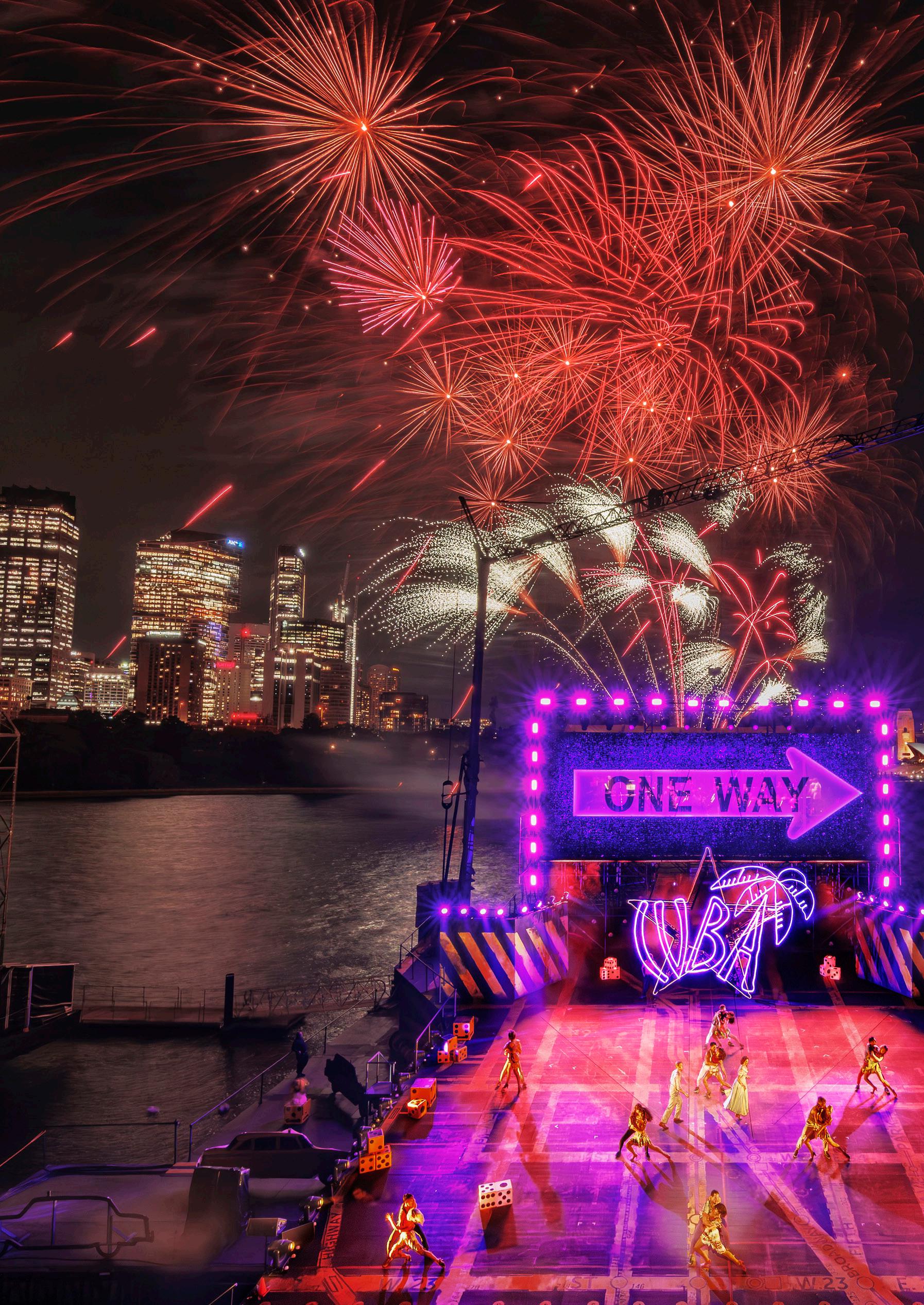


Staged against the glittering backdrop of Sydney Harbour, HOSH is as much an engineering marvel as it is a cultural highlight. Each year, public parkland is transformed into a 3,000seat amphitheatre, complete with a raked stage floating on the water, FOH towers, backstage infrastructure, and hospitality venues. It’s truly an epic undertaking where flawless communications are as vital as the music itself.
“In all, this year we had around 100 personal comms operating during every performance,” explains Roo Smith, senior project manager at Riedel. “That includes Bolero wireless beltpacks for most of the stage crew, some dedicated wired, digital PunQtum beltpacks for the six followspot crew, as well as the two-way radios used by people like security and house staff.”
Riedel’s design proved resilient even amid interference challenges common in RF-dense areas like Sydney Harbour. Bolero dynamically hops frequencies to avoid disruption, and the deployment of a trunked radio system and exclusive RF licensing helped reduce interference, ensuring smooth operation of all critical comms and wireless production tools.
The entire HOSH site was constructed in just four weeks. Riedel infrastructure supported the network backbone, enabling seamless integration of 18 2300 Series and three 1200 Series Riedel SmartPanels and Artist intercom systems, unifying show control, internet access, security systems, and cashless payment services across the venue.
One of the key advantages of Riedel managing the entire network and associated cabling was the ability to streamline setup across departments. Instead of separate cabling runs for audio, lighting, and comms, Riedel’s unified network design enabled all teams to share fibre infrastructure and connection points, significantly improving efficiency. To withstand the harsh marine environment, Riedel installed heavily armoured fibre lines connecting the floating stage to shore via a service tunnel. This build protects against razor-sharp oyster shells, barnacles, pooling water, and saltladen mist — all common challenges on the harbour.
“We usually have 20 CCTV cameras around the entire site, and they’re especially vulnerable to the conditions,” adds Pablo Puig,
production manager, Opera Australia. “By the end of the season, we’d be down to about 10 or so. Riedel came up with a more reliable CCTV system, which is, of course, also part of the whole site network. If we have a medical emergency in the audience, or any kind of issue that needs locating fast, the CCTV is the best way to find out what’s going on.”
The relationship between the team from Opera Australia and Riedel has grown into a deeply collaborative one, with both teams working closely to anticipate challenges, respond quickly to emerging needs, and continually refine processes to support the production’s complex requirements.
“Our partnership with Opera Australia and Handa Opera on Sydney Harbour represents the very best of what Riedel stands for: technical innovation, collaboration, and a relentless commitment to excellence,” concludes Smith. “Bringing this event to life each year on such a challenging site is no small feat. We’re proud that our solutions continue to enable the creativity, precision, and magic that audiences have come to expect.”
RIEDEL.NET

PAUL HALES THE FUTURE OF THEORY PROFESSIONAL
When Theory Professional emerged in 2018, it wasn’t aiming to be just another loudspeaker manufacturer. From the beginning, the company set its sights on reshaping the residential, commercial, and professional installation markets with something genuinely different. That ambition quickly paid off, as Theory became known for highperformance loudspeakers that combine innovative form factors with an uncommon dedication to sound quality – qualities that have distinguished it from a crowded field of competitors. In this exclusive interview presented by Celestion, Paul Hales, owner and CEO of Theory Professional, looks back on his early influences and the path that led him into audio. He discusses the philosophies and culture that drive the company, the innovations that have helped build its reputation, and why he believes the future of Theory lies in the fastgrowing commercial install sector.
How did you get started in the audio business?
I started my first commercial speaker company, Hales Design Group, in 1988, focusing on high-end audiophile products. During the 1990s, I gained notoriety in the audiophile segment and devoted thousands of hours to correlating measured data with perceived sound quality. Towards the late ‘90s, I got disillusioned with audiophile products and all the industry dogma, in general. Hi-Fi sound is small and polite. Many
of the technologies used in Hi-Fi products, including the widely used dome tweeters, are very inefficient and can’t convey the real power and dynamics of live music. This feeling of disillusionment led me to join QSC in 2000 as their first employee on the loudspeaker side, establishing their R&D department for speakers. I spent four years designing professional speakers for various applications, learning how to create speakers with exceptional dynamic range that also sounded like hi-fi speakers. This has
been my unique value proposition for the last 25 years. This approach now underpins two businesses: Pro Audio Technology, which caters to highend private screening rooms with commercial cinema-style speakers that offer hi-fi accuracy, and Theory Audio Design (Theory Professional), which extends this approach to broader residential, commercial, and professional applications. I am the owner and CEO of both companies.
Theory Professional is renowned in the industry. What’s the main reason for that?
Our primary strength is our ability to achieve exceptional levels of accuracy in speakers, including large-format sound reinforcement systems. Theory Professional offers a unique approach in the small-to-medium commercial installed sound and sound reinforcement segments. While other brands often replicate existing designs, our products are entirely different; they are made from aluminium, feature high-end proprietary transducers, which Celestion supplies, and boast unique, compact, and shallow form factors. This innovative product, combined with hi-fi sound quality and high output, alongside a focus on superior design, has been very well-received by the market.
What do you believe your most innovative product or service is?
Our general philosophy is to keep our product catalogue simple, which, in our competitors, we find to be overly complicated with hundreds of similar products. We aim for a more streamlined and premium approach, similar to Porsche’s car philosophy of offering fewer, highly effective models. A specific example of this is our ic6 Acoustic Core, a six-inch ceiling speaker that can also function as a pendant loudspeaker or a landscape loudspeaker when mounted in appropriate enclosures. This standardisation simplifies inventory and maintenance for our customers, allowing a single part to serve multiple audio needs.
Outside of your company, what do you think has been the single most important technological achievement in our industry?
That’s a tough one, and normally, I spend more time talking about the absence of technological advancements in our industry, particularly in loudspeakers. I have a super computer in my pocket, and we have artificial intelligence now, but some speaker brands are still

making the same models that they introduced in the 1970s. So, on the loudspeaker side, there hasn’t been that much innovation. Expanding to our industry in general, I believe the most significant achievement has been the advent and refinement of Class D audio amplification. Class D amplifiers have benefitted the industry by becoming much more efficient, lighter, and smaller, significantly reducing the size and weight of equipment racks while increasing power output. Crucially, their performance is now on par with linear amplifiers.
What is the accomplishment you’re most proud of?
I am proud of helping QSC develop their corporate logo and industrial design language for loudspeakers, which became distinctive yet tasteful and are still in use today, 25 years later. We began with a goal of making QSC loudspeakers identifiable from across the room, and they still are. However, I am probably most proud of the conception and positive reception of Theory Professional as a brand. We set out to disrupt the status quo, and despite being a small team, we are executing at a very high level, leading to early success with high-end projects and rapid industry adoption. Theory Professional operates with a small group of highly effective and dedicated individuals. Our culture
revolves around high performance; we are a team of smart, hardworking people striving to achieve significant goals. We value individuals who are naturally driven to work hard, accomplish great things, and gain satisfaction from their achievements. To put it more obnoxiously, I have a sign outside of my office that reads, “No stupid people beyond this point,” but, “We only like to hire smart people” might be a more polite way to say it.
How are you poised for the future?
We believe our future lies primarily in the commercial install side of the business, where we have already achieved early success with significant projects. Theory is establishing itself as a recognised brand in the residential market and is quickly gaining traction commercially since introducing Theory Professional in 2023. As a smaller business, our resilience and ability to quickly adapt to industry changes and customer demands give us an advantage over larger companies that might find it harder to pivot rapidly. Our strong customer relationships and reliance on referrals also position us for continued growth, as new client relationships often begin with recommendations.
MYTH OR TRUTH?
The best sounding live console was originally designed for broadcast.

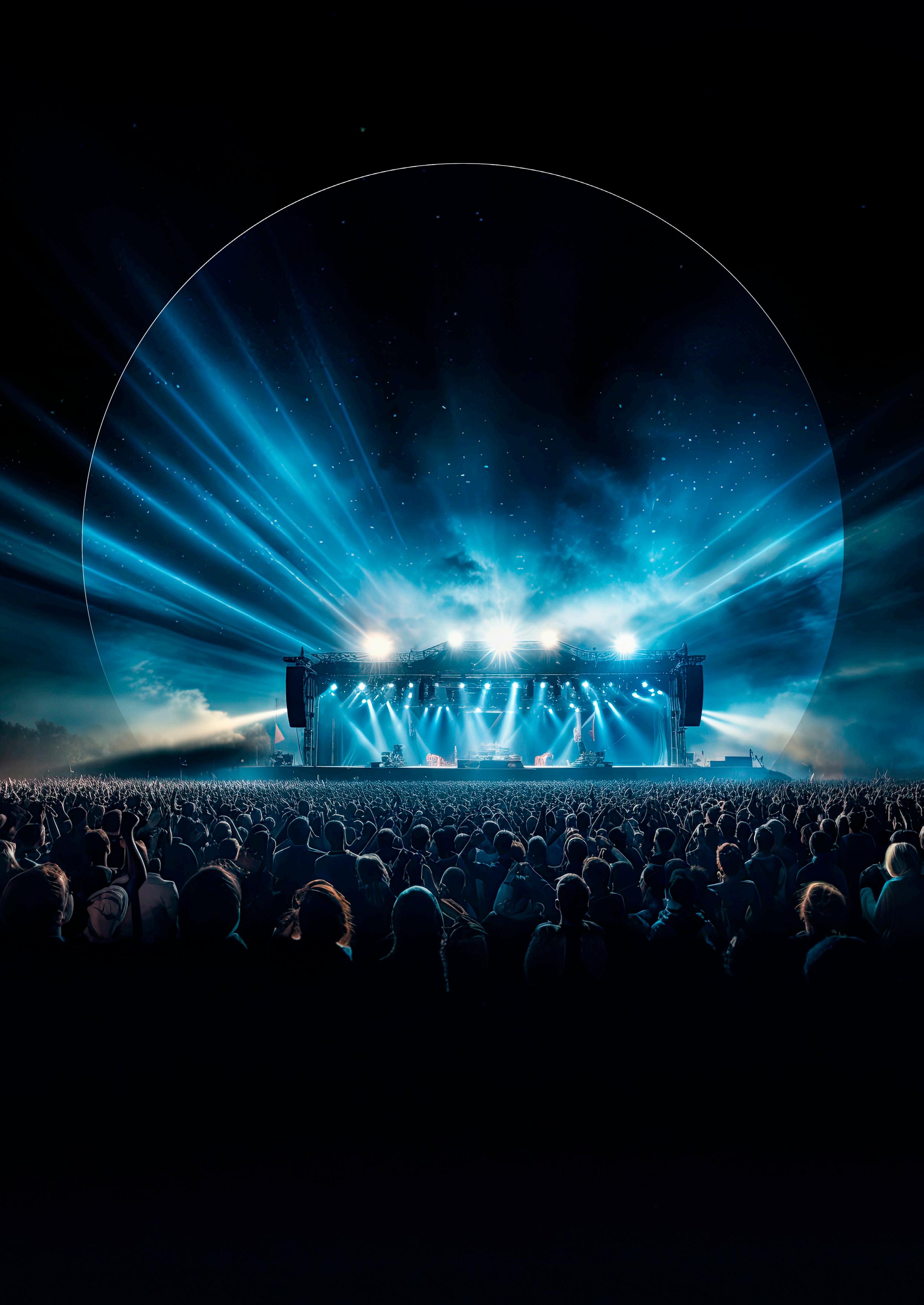
Hearing is believing – sign up and find out for yourself.

SECRET SESSIONS
LOKERSE FEESTEN
Each summer, the streets of Lokeren pulse with energy as Lokerse Feesten transforms the Belgian city into a hub of music, food, and community spirit. What began in August 1975 as a small local gathering has, over the course of five decades, grown into one of Belgium’s most celebrated festivals. This year marked its 50th edition – a landmark moment in a story that has seen the event host a who’s-who of global artists spanning every genre imaginable. Headliner discovers how a CODA Audio N-APS system handled the demands of a full 10 days of nonstop music…
For the 2025 edition, more than 100,000 visitors poured into Lokeren to witness headline sets from acts including The Pet Shop Boys, The Smashing Pumpkins, Sex Pistols, and Iggy Pop. But the big names weren’t the only attraction. New for this year was the Secret Sessions, an intimate stage tucked near the entrance to the main arena, designed to spotlight emerging and local talent.
In this smaller, open-air setting, audiences discovered fresh voices and rising bands, experiencing the same passion and energy that fuel the festival’s biggest stages. Delivering those performances required a sound system with just the right balance: compact yet versatile, powerful yet precise, and robust enough to handle a full-on music schedule.
Event production supplier LJKE supplied a CODA Audio N-APS system to meet the requirements. LJKE is a small, in-demand rental company based in Lokeren with more than 20 years of experience supplying a variety of events.
For the last 15 years, as a customer of CODA’s Benelux distributor Viladco, the company has invested in CODA Audio and now possesses an inventory of HOPS, N-APS, and N-RAY. In fact, LJKE was one of the first companies to invest in N-RAY when it was
“SECRET SESSIONS WAS ANOTHER FINE EXAMPLE OF HOW THE POWER AND FIDELITY OF CODA AUDIO CAN OBTAIN MAXIMUM IMPACT FOR THE ARTISTS AND BANDS.”
launched in 2020, having been one of a select group of global partners who participated in the system’s prelaunch programme.
N-APS was the perfect choice for Lokerse Feesten, being a compact dual 6.5”, 2-way arrayable point source that combines the straightforward operation of a point source with the scalability of
a line array, and crucially, offering flexibility in applications where space, coverage, and clarity are critical. Compared with similar systems, CODA reports N-APS delivers twice the power handling and SPL, along with extended low-frequency response. It also provides a wide dynamic range and variable horizontal directivity, available in 60°, 90°, 120°, or asymmetrical configurations.

At the core of the design is CODA’s patented RDC technology. Related to the planar wave driver but with a curved 20° wavefront, RDC reduces distortion and eliminates the need for reshaping, producing a precise and consistent output. When multiple N-APS cabinets are combined, they perform as a single source, avoiding interference and maintaining uniform coverage across the audience area.
These qualities made the N-APS particularly well-suited for the festival’s new Secret Sessions stage.
The system’s compact footprint allowed it to fit neatly into the intimate, open-air setting, while its high power, low-end extension, and controlled directivity ensured clear and even sound for both solo performers and full bands – meeting
the demands of a varied programme without compromise.
For the Secret Sessions area, LJKE deployed three N-APS and two SCN-F bass extensions per side as front of house, supplemented by two Cue Four stage monitors. The system was powered by two CODA Audio LINUS14D amplifiers.
“At LJKE, we love the CODA Audio sound and workflow,” enthuses Nils De Paepe of LJKE.
“We supplied the Secret Sessions for 10 days in a row without a hitch. Each day comprised two artists or bands, with around 300 people watching. Being so lightweight and compact, the system was easy to handle, meaning that we were set up in less than half an hour every day.
For such a physically small system, the power output is very impressive, and the artists, their engineers, and the audiences were very complimentary about the sound quality.“
“With many years’ experience of the brand, LJKE does great work with their CODA systems and fully understands what these compact yet very powerful systems are capable of,” adds Hans Engelen from CODA Audio distributor Viladco. “Secret Sessions was another fine example of how the power and fidelity of CODA Audio can obtain maximum impact for the artists and bands, enabling them to take full advantage of playing at such a prestigious event.”
A NEW HIGH IN THE LOW END
Designed and built in the UK, Ten Squared (Ten2) is a range of premium, low frequency loudspeakers. Engineered without compromise, they deliver consistently superior levels of performance in the most demanding professional sound reinforcement applications. All the time. Every time. 18, 21 and 24-inch models available. Discover Ten

celestion.com
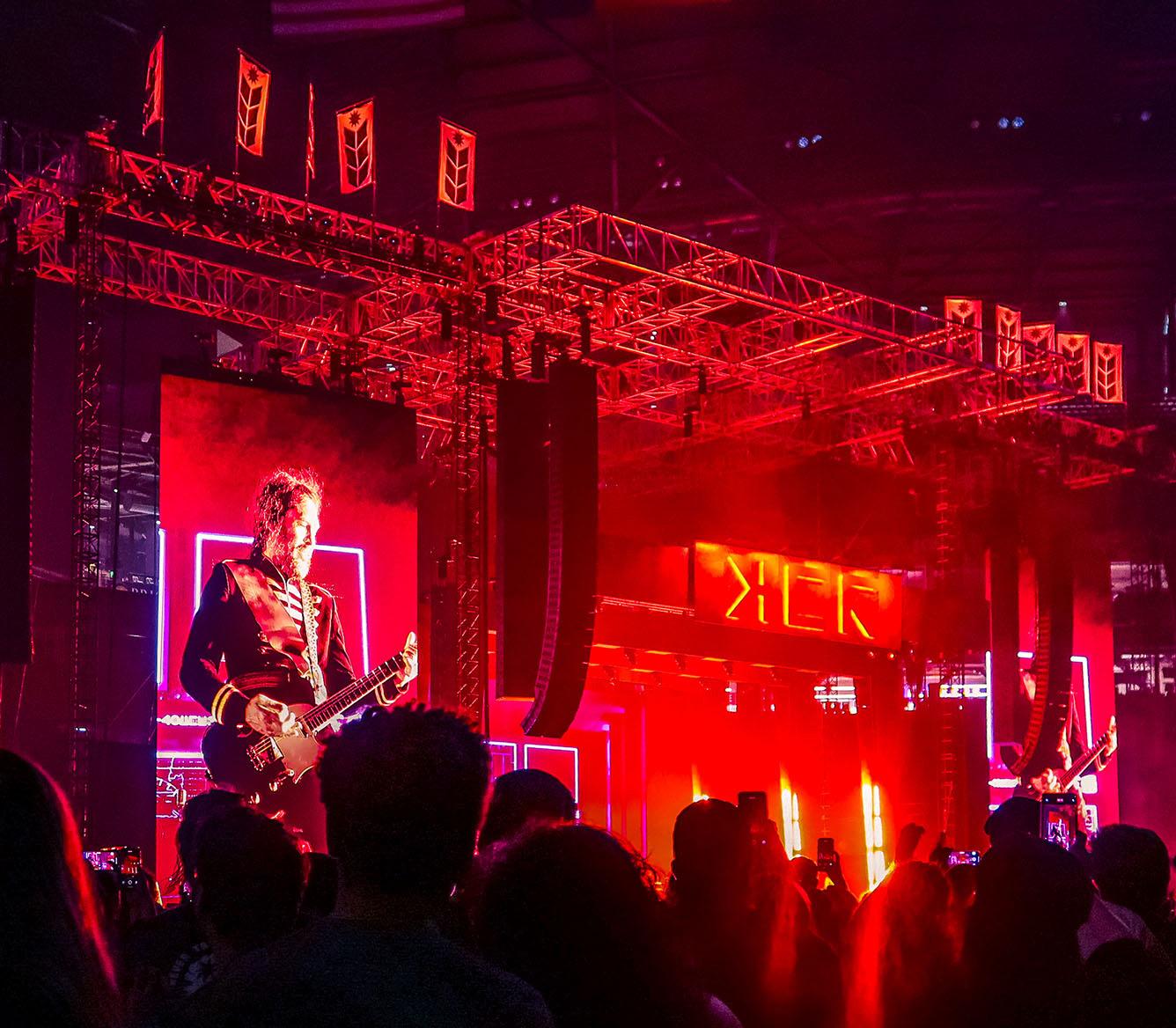
MY CHEMICAL ROMANCE
Nearly 20 years after The Black Parade first cemented My Chemical Romance as icons of the emo movement, the band is proving its legacy is stronger than ever. In 2006, the album’s mix of raw emotion and theatrical flair debuted at number two on the Billboard charts, sparking a tour that carried those songs into arenas around the world. Fast forward to today, and MCR is once again taking The Black Parade on the road – this time on a global scale with the aptly named Long Live the Black Parade tour. The Black Parade may have started in 2006, but its march shows no signs of slowing down, as Headliner discovers…
Armed with a massive L-Acoustics K1/K2 rig provided by Eighth Day
Sound, the band is once more on tour, delivering the album’s most beloved anthems with more power and precision than ever before. The system’s flexibility allows it to scale across stadiums, arenas, and ballparks, ensuring fans everywhere –from North America to South America, Asia, Mexico, and the UK in 2026 – can experience the same intensity and emotion that defined the record nearly two decades ago.
In 2007, the group embarked on a 36-date North American tour, with support acts Rise Against and Muse, carrying an L-Acoustics V-DOSC/ dV-DOSC loudspeaker system for its sound reinforcement. This time around, the band is carrying a much larger and more powerful system in
the K Series rig (provided by Eighth Day Sound, a Clair Global brand).
“This is a loud rock show,” stresses system engineer Andy Fitton, who, in just the past year or so, has worked on L-Acoustics tours with Madonna –including the 2024 Rio de Janeiro show where she played to 1.6 million people – and Vampire Weekend. “It runs 101 to 102 dB, and the mains are throwing 120 metres, or 400 feet, maintaining consistent tonal balance from front to back, where we transition sonically between the main and delay hangs. To my mind, that is quite impressive.”

MCR FOH Engineer Jay Rigby says he directly credits his decision to use L-Acoustics to Fitton. “When I took over mixing Vampire Weekend a couple of years ago, I fell into working with their system engineer, Andy, and the K1 PA they had out. I was initially sceptical, but after the first show, it was hands-down the best PA I had ever been on. What Andy can do with both Soundvision and K1 is incredible. On top of that, as this is a reincarnation of My Chemical Romance’s original Black Parade tour, which carried V-DOSC, I thought it would be nice to pay tribute, and keep it ‘French,’” he adds. “We have consistent results where Andy is doing all of the tuning and timing while I am on the flight to the next gig, and when I show up, I turn it on, and we are show-ready. It’s been fantastic.”
To accommodate the different venue configurations on the tour, Fitton’s system design includes two main hangs of six K1-SB subs over 14 K1 over four K2 cabinets each. “That’s the largest hang of K1 that you can deploy,” he points out.
Behind each of those line arrays, there are hangs of 16 KS28 subs, configured in a three-to-one ratio cardioid array. Side hangs comprise 16 K1 over six K2, and, for venues where upper bowl seating coverage is necessary, the tour is carrying two additional upstage hangs, each of 10 K2. Where delays are required, three to four sets of 12 K2 are available, while on the stage, one A15 Wide and two KS28 subs per side provide side-fill for the band. Up to 108 LA12X amplified controllers are used for the largest shows.”
“On the ground, we have 12 carts of three KS28 subs with a two-toone cardioid ratio,” he continues. “We have an A15 Focus for frontfill stacked on top of each one of those carts. That gets wrapped and strapped together on custom carts and rolls in and out like that. Our PA crew has those carts ready to roll to the truck before I have my FOH drive rack turned off when we’re loading out. It’s crazy just how fast this PA system moves in and out.”
The tour has maxed out the line length of the main hangs to accommodate Rigby’s sound design, Fitton says. “His mix is all about the low-mid. Obviously, you end up with a lot of sub with an array that size, but for him, getting the low-mid to sit in the mix, especially with this band, is absolutely crucial. If you listen to Welcome to the Black Parade, there’s a tom fill right before the chorus –that’s my favourite part of the whole song. So just making sure that people can feel that impact, even if they’re 600 feet away from the stage, is why we went for that line length.”
The transition from the main K1 arrays to the K2 delays is completely seamless, Fitton says.
“Panflex is an absolute godsend when working with delays. Being able to manipulate transition zones using Soundvision’s coverage and delay modes is a real game-changer. It’s like having thousands of virtual measurement mics.”

“GETTING THE LOW-MID TO SIT IN THE MIX, ESPECIALLY WITH THIS BAND, IS ABSOLUTELY CRUCIAL.”
“Our load-ins and load-outs have been flawless. It’s so easy to hang the K1, even with such large box counts. Our PA crew is led by crew chief Tristan Johnson, and PA techs Colin Dodds, Katy Ruggiero, Chris DiLeo, and Albert Lim do an excellent job putting the system up. I don’t think there has been a single incorrect angle the entire tour,” enthuses Fitton.
Fitton’s secret, he reveals, is L-Acoustics’ latest release of the company’s 3D modelling and prediction software, Soundvision 2025.1. “L-Acoustics has updated the calculation engine so you can look at how your mains and subs
interact, how the low end propagates throughout the entire venue, and you can also look at more complex interactions between sources. Unlocking that feature in Soundvision is huge for me. I’m making full use of those new additions to Soundvision, like being able to see the frequency response at FOH, what people in those tough-to-reach spots are hearing, or the transitions between multiple arrays. We also use L-Acoustics’ P1/M1 platform to tune the system. It makes it so easy to collect a large quantity of data very quickly, and it’s a great tool for verifying the validity of the system deployment.
“The import feature from Vectorworks [3D CAD software] into Soundvision allows me to have all of the scenic elements of the show drawn in,” he furthers. “When I’m working with scenic designers, creative designers, or production managers, it’s so easy to visualise where things go, now that you can draw those detailed elements into Soundvision. Exporting my design to the new Soundvision Connect platform is a great way to share ideas with other stakeholders. And it just looks cool!”
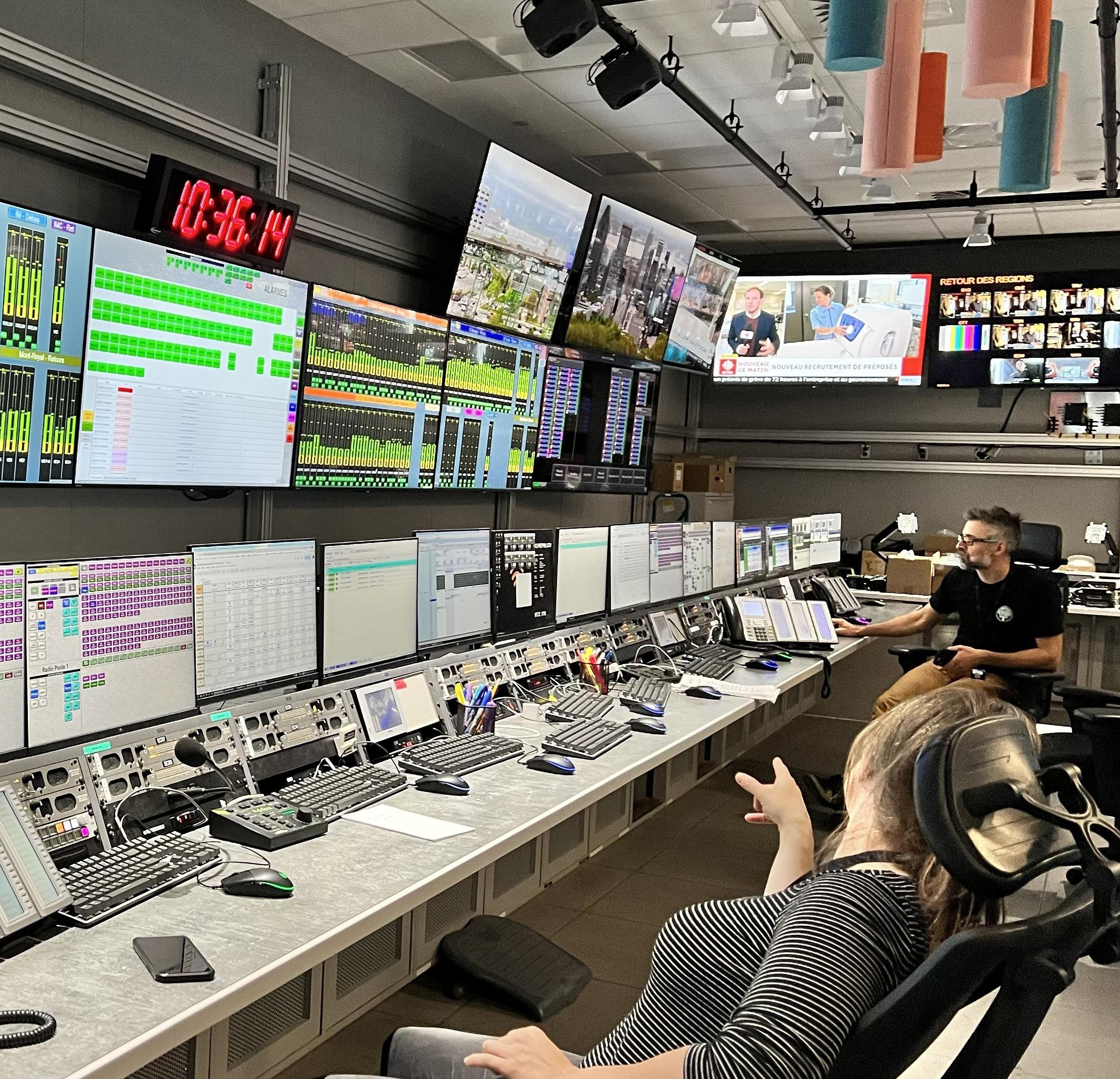
CBC/RADIO CANADA
Photographer: Anna Azarov

Live large-scale streaming just got a serious upgrade at CBC/ Radio-Canada. The national public broadcaster can now handle up to 80 simultaneous streaming events, from sports and concerts to press conferences and simulcasts, using only two instances of Lawo’s HOME mc² DSP app. Headliner discovers how this compact, powerful workflow has transformed how Canada’s biggest broadcaster delivers live content.
The primary use case for audio shuffling is to correct nonstandardised audio sources received from venues where live events are held to prepare them for airing on digital outlets, such as O&O, Gem, CBC.ca, and third-party services such as YouTube, FAST channel programming, etc. This is often used for university sports, government news conferences, and Olympic events.
Many media sources arrive with non-standardised audio streams that require digital streaming operators to use an audio shuffler function to manipulate the audio
prior to digital streaming. Audio on channels three and four, for instance, is remapped to channels one and two; the gain of soft audio is increased; off-tube commentary is added to the stadium sound; 5.1 sources are downmixed to 2.0, etc. In all cases, the goal is to achieve a standardised 2.0 audio stream for live events that are streamed to the web using downstream AWS Elemental encoders.
Given the number of possible combinations and channels, CBC/ Radio-Canada was looking for a flexible SMPTE ST2110-based solution to replace legacy, singlepurpose hardware used so far, and to also introduce the ability to scale up and down the number of audio streams that can be processed simultaneously beyond the limitations of the previously-used hardware devices.
“Today, one app offering as many shuffling instances as we need can be controlled using VSM to provide us with the required agility,” explains Jaime Thomas, supervising
technician, digital presentation at CBC/Radio-Canada.
After studying the proposals from various manufacturers, Lawo’s HOME mc² DSP stood out as the most elegant and compact solution for the envisaged audio workflow. The HOME mc² DSP app’s CoMixer function indeed allows the team to instantiate the desired number of audio shufflers. For its streaming and linear channels, CBC/RadioCanada requested 80 shuffling instances, each offering 22 audio input channels and 18 audio output channels. The easy-to-manage solution relies on scripts for XCS mixing cores and mapping files for the VSM control system, which is used to map, adjust and balance the relevant audio feeds for each streaming event individually. Two VSM panels have been created, each displaying up to 40 mixes.
“LAWO IS VERY PLEASED THAT THE COMIXER SHUFFLING FEATURE OF THE HOME MC² DSP APP ENABLES USERS TO GET CREATIVE AND EXPLORE NEW HORIZONS.”
The system works as follows: where necessary, the original non-standardised audio content is modified, which includes operations such as audio channel remapping, gain adjustment, downmix, and mono summing.
The standardised signals are then routed to the six-channel (5.1) and Stereo busses. Each CoMixer shuffling instance provides DSP functionality for level changes and other tweaks. Next, the resulting stereo stream is passed on for use downstream.
Each HOME mc² DSP app configured by CBC/RadioCanada provides 40 shuffling mixers, so two HOME mc² DSP app instances allow CBC/Radio-Canada to accommodate up to 80 streaming events. Although up to three HOME mc² DSP instances can comfortably run on one 64-core CPU server, CBC decided to host its two HOME mc² DSP instances on separate servers. This way, a HOME mc² DSP instance can “migrate” to the other server in the event of an issue, for seamless redundant operation.
“This is another milestone for Lawo,” enthuses Herbert Lemcke, Lawo’s key account manager. “Lawo is very pleased that the CoMixer shuffling feature of the HOME
mc² DSP app – which is chiefly known as a formidable DSP processor for our mc²-series, crystal and headless consoles – enables users to get creative and explore new horizons. Stay tuned for even more exciting audio shuffling news at this year’s IBC show.”
“We like the economy and dynamic scalability of the HOME mc² DSP app,” adds Frédéric Dorion, project lead, capital project management, governance and engineering at CBC/Radio-Canada. “With just two app instances and the built-in shuffling functionality, we are able to cover as many streaming events as we need, with convenient VSM panel control.”
“With this ST2110-based event streaming project in Toronto, we have implemented a solution from Lawo we trust,” concurs François Legrand, senior director of innovation, governance and engineering, CBC/Radio-Canada.

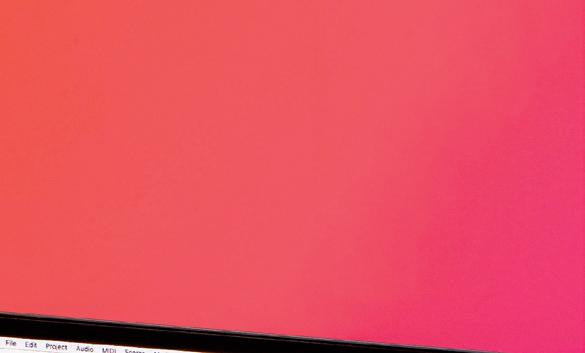


DRUM RE-SYNTHESIZER
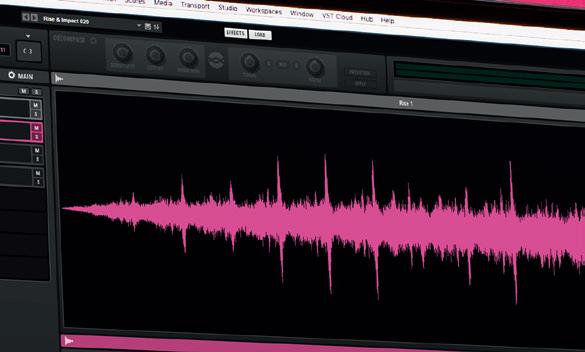



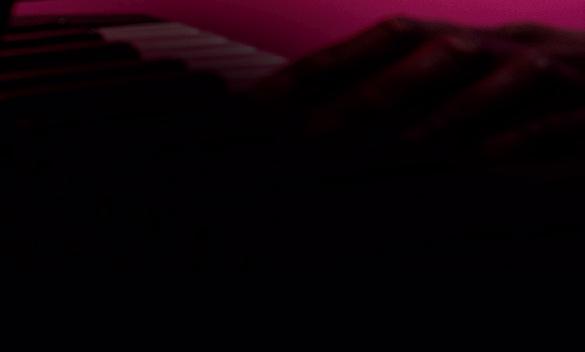







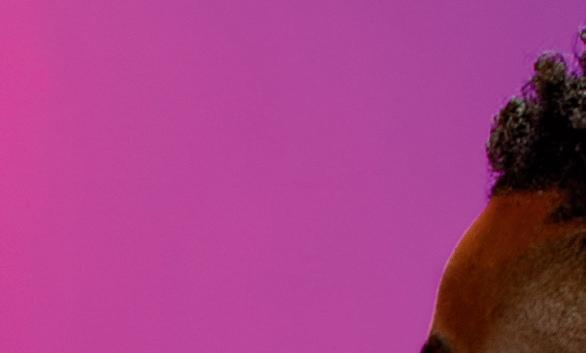








A revolutionary way to design your own drums – Backbone is your new, innovative drum designer for single kicks, snares, hi-hats, percussion, rises, hits and more. Layer up to eight samples and shape them with classic subtractive synthesis, decompose samples into tonal and noise elements and re-synthesize samples to manipulate them in unheard ways.
steinberg.net/backbone



LIVE TODAY. LOVE TOMORROW. UNITE FOREVER.
TOMORROWLAND
Tomorrowland 2025 in Boom, Belgium, started with a bang, but not on a musical level: just a few days before the festival was due to begin, a fire destroyed the iconic Main Stage. Just days before opening, a huge fire tore through the festival’s iconic Main Stage. But in true Tomorrowland spirit, the setback became a story of resilience. Within just 24 hours, organisers, crews, and technical partners joined forces to build an entirely new stage – transforming disaster into a powerful display of unity. The result wasn’t just a stage, but a living symbol of the festival’s motto: Live Today. Love Tomorrow. Unite Forever. Headliner discovers how over 260 Cameo outdoor lights provided large and small lighting productions across several festival stages, despite the time pressure and difficult conditions.

PRG BeNeFra was responsible for the lighting design and rigging on the Main Stage. “It was a shock,” recalls managing director Peter Robberechts, remembering the moment the fire broke out. “But as soon as it was clear that no one was injured, it was immediately a case of: what needs to be done now – and how quickly?”.
The new Main Stage was quickly equipped with a selection of immediately available spotlights, including the Cameo ZENIT W300 Outdoor LED wash lights.
“The ZENIT W300s were a strong visual anchor for the new stage,” explains Peter Robberechts. “Their flexibility and quality were decisive for the overall result.”
The challenge was to reorganise the technology, power supply, rigging, networking and programming within a few hours, without compromising on safety and impact.
“That was one of the most inspiring experiences of my career,” shares Robberechts. “Everyone involved –from the crews and the suppliers to the organisers – worked together to achieve something extraordinary. This mutual support was invaluable.”
Cameo was also used on the other festival stages. On the shell-shaped Planaxis Stage, which borders directly on an area of water, as well as on the Rise Stage located in the forest, long-standing technical partner L&L Stage Service opted specifically for the Cameo OTOS W12.
The IP65 wash moving head impressed with its strong outdoor performance, variable zoom settings and high colour quality – ideal for the extensive, bright stage areas and atmospheric effects between trees and water elements.
“The large white areas in particular required superb lighting quality. The OTOS W12 was clearly the first choice here,” says Bart Weyts, managing director of L&L Stage Service. After sunset in particular, the OTOS W12s created spectacular beam effects through the treetops – a memorable interplay of light and nature.
Once again this year, the Cameo ORON H2 hybrid phosphor laser moving heads were utilised on the floating Crystal Garden Stage, which has limited rigging options. The IP65-certified lights impressed with their fast response, precise
colour rendition and high integration capability in complex lighting designs, even under challenging outdoor conditions. “In a lively environment like the Crystal Garden in particular, the ORON H2s stand out with their performance: precise, reliable and visually strong,” confirms Robberechts.
For Robberechts, the fire at Tomorrowland was not only a shock, but also a lesson in crisis management in the live event sector: “Good preparation is important, but it’s always the people who make the difference. In a crisis situation, you need clear leadership on the ground, quick decision-making and complete trust from everyone involved. It is invaluable to have partners and employees who remain calm, act quickly and work together without egotism. Everyone made their contribution: our crew, the Tomorrowland team, and all the suppliers. This disaster has once again shown what this industry is capable of.”

Words
bY ALICE GUS T NOSFA
NOTHING MORE STUDIO TO STAGE
Nothing More stormed their way across Europe this summer, delivering their trademark high-octane performances to hundreds of thousands of fans at 15 festivals in nine countries. From Download in the UK to Rock am Ring in Germany, the Grammy-nominated rockers brought raw energy and precision to every stage. Behind the kit, drummer Ben Anderson relied exclusively on his trusted arsenal of AUDIX microphones. He explains why they’re perfect for both the chaos of live shows and the detail of studio sessions.
What’s new with Nothing More?
We recently completed a successful European festival circuit; we hit festivals in 15 cities across nine countries. We’re doing a headlining tour of Europe in November and will hit the U.S. from January through March. These will wrap up the Carnal album cycle. We also have a few one-off festivals scheduled, including Inkcarceration. For the upcoming tour, we’re developing a new show that incorporates more of the new album and builds it into a full show experience. After touring concludes, our focus will shift to working on the next album. Nothing More historically takes our time with these types of things, so we’re trying to get a jumpstart on the new material, having already produced a couple of demos.
What is your drum microphone setup?
For my home studio and live rig, I exclusively use AUDIX mics. The AUDIX D6 is my go-to kick drum mic. It’s unstoppable, especially for rock. I position it on a Kelly shoe system, centred in the kick but slightly ahead of centre. I also use another D6 on my 18” floor tom. The AUDIX D4 captures my 16” floor tom, and two AUDIX MicroDs capture the rack toms. The MicroDs pop great and are very discreetlooking. A pair of AUDIX SCX25A is used as my overhead microphones. I think they’re fantastic. They are also instrumental to my tom sound, which combines the overheads for the ‘body,’ while the MicroD provides the direct mic attack on tom hits. AUDIX i5s are positioned over the top and under the bottom of the snare drum. I use AUDIX f9s for auxiliary purposes, typically on hi-hat and ride cymbals, but hi-hat miks are rarely crucial for my sound, as the overheads capture most of what I need. I should also mention that our front-of-house engineer also records every live show using AUDIX.
How did you first get exposed to AUDIX?
My exposure to AUDIX microphones began when I was working at Mind’s
Eye Digital Studio in Phoenix with Larry Elia. Larry was using AUDIX D2, D4, and D6. I immediately noticed they sounded really good for rock, and I came to realise that AUDIX microphones make it easy to get a great drum sound. After leaving that studio and moving to L.A., I switched exclusively to AUDIX. I had previously used a mismatch of other microphones. For me, the AUDIX D series microphones are spot on. I hold a very positive opinion of the AUDIX brand and believe that, especially for a rock setting, AUDIX mics point everything in the direction that you want to go and do a lot of the work for you. In addition to their great sound quality, I love their durability; they don’t break even if I accidentally hit them. I also appreciate their customer service – everyone is so responsive and friendly.
Can you walk us through your recording and production process and studio set-up?
For tracking, I’m a Pro Tools fan. I became proficient after attending the Conservatory of Recording Arts and Sciences in Phoenix around 2010. This background has proven invaluable because I prefer to handle all drum editing and comping myself for Nothing More albums. I don’t like anyone to touch my drums, as I want final say to avoid others gridding the hell out of my performances or taking a fill and just completely flattening it. Staying personally involved makes it easier to execute my creative ideas. Sonically, I aim to keep everything very clean, retaining the details picked up by AUDIX when recording into any kind of DAW. I am not a fan of using lots of processing when tracking and typically apply only a light amount of EQ at that time, saving any processing for post.
While I’d love to have racks full of API preamps on my drums because I consider them the best on drums, my current setup includes a Focusrite Scarlett Octopre, an Apogee Ensemble, two Universal Audio
Can you share any secrets to getting a great drum sound on recordings?
I often use parallel bus compression on drum shells with a Decapitator plugin to create a thick, roomy compression sound that combines a little bit of grit with a little bit of saturation. Black Sheep Audio’s Silencer plugin is a favourite for removing unwanted crap, especially on snare and toms. My home studio is nice, but it lacks a massive drum room. I also use a technique I call “sample adding” to emulate rooms, rather than full sample replacement. I take samples of my actual kit and snares from previous Nothing More sessions that were recorded in a big room. I trigger these samples, focused only on the far room miks, to create a sound specifically for the kick and snare.
Could you give some shoutouts to your peers who inspire you sonically?
I value bands that carve out their own sound, and I seek out drum sounds that feel lively and impactful. A few are: Animals as Leaders’ Steve Judd has an extremely signature sounding drum sound full of raw, organic tones; Nothing But Thieves’ new album, Dead Club City, has a great overall tonal quality, particularly the dead, thumpy snare drum sound; and Dead Poet Society’s last album had great drum tones that were crafted intentionally to have a vibey sort of feel. I also find Loathe’s effort to create a unique sound, encompassing drums, other instruments, and the overall mix, including shoegazy vocals, to be inspiring, and Gojira has been really successful in developing a unique sonic identity. You can identify their music just from the bass and drums. They’re kind of like Tool in that regard. Apollos, and an Apollo satellite, in total, providing about 16 inputs. I utilise Unison Preamps to emulate API preamps on the kick and snare, and 1073s for the overheads. All processing largely occurs through plugins within Pro Tools after initial tracking.

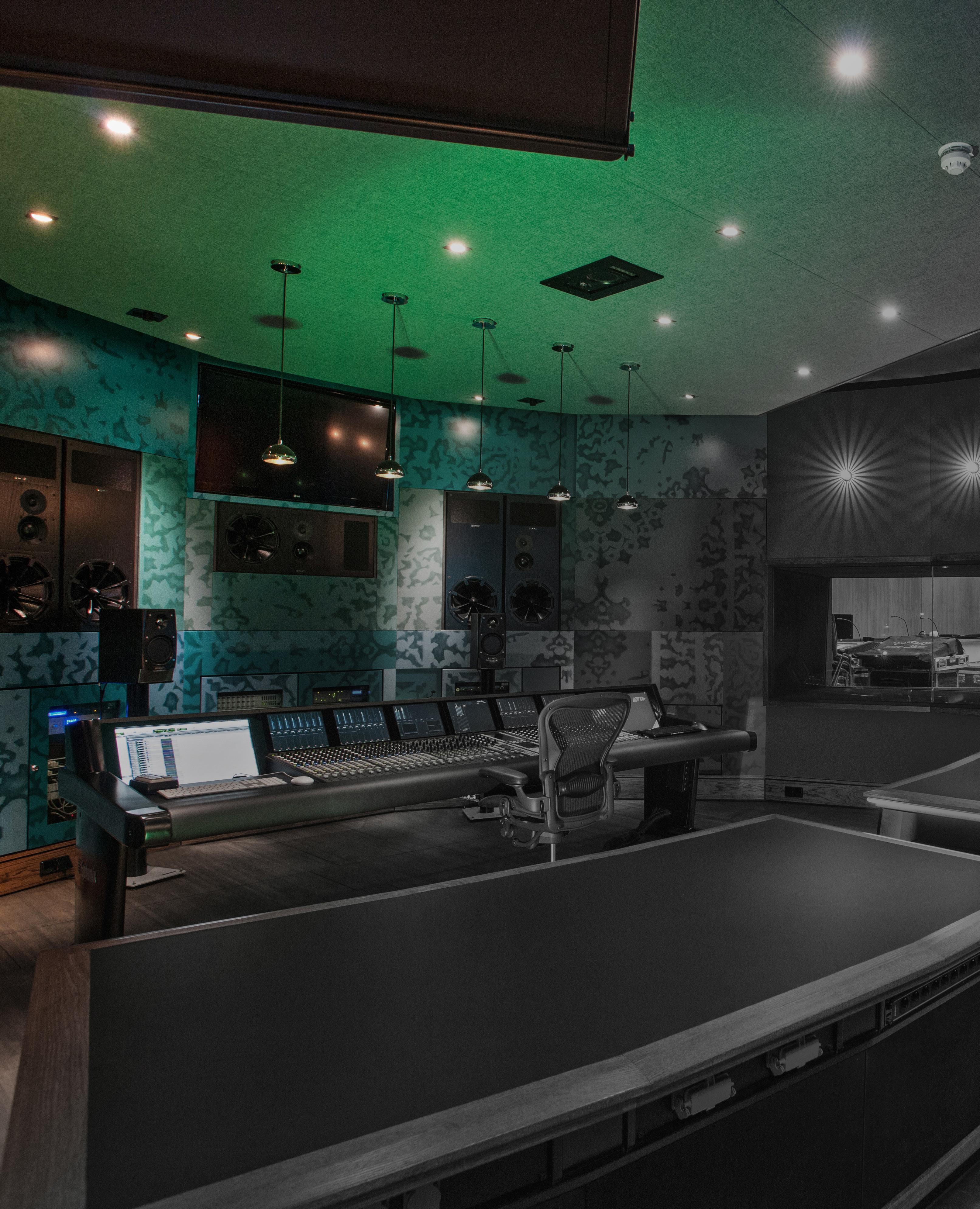



byMIKE
DIAS MIKE DIAS
WHY EXECUTIVES SHOULD LEAD LIKE ENTERTAINERS
In his latest Headliner column, pro audio executive Mike Dias profiles Jason Batuyong, the elite monitor engineer trusted by America’s Got Talent and over 400 of the world’s most influential keynote speakers at Apple, IBM, Microsoft, and beyond. From mixing monitors for television’s highest-pressure live moments to managing the sound –and energy – of billion-dollar corporate summits, Batuyong brings more than audio mastery. He brings composure. Presence. Precision.
He doesn’t just work backstage. He stabilises the stage itself. Here, he explains how two simple words –“You’re good” – can transform fear into focus, and why today’s leaders need to learn how to say it like they mean it.
Batuyong is the calm behind the chaos – an elite monitor engineer for America’s Got Talent and many memorable live TV moments. But his real genius isn’t technical, it’s emotional. He knows how to deescalate fear, restore confidence, and transmit clarity. And it all starts
with two words: “You’re good.” Not a question. Not a negotiation. A declaration. That one line does more than calm talent – it transmits confidence. Because when Batuyong says it, he’s not hoping it’s true.
He’s already run the signal flow, watched the gain structure, and built the fallback plan. He’s rehearsed failure so many times that he’s ready for success. So they can be too. “I learned that from one of my techs,” Batuyong says. “You don’t ask. You tell. You’ve got to mean it.”
“IT’S LIKE EATING AT A CELEBRITY CHEF’S RESTAURANT. YOU’RE NOT THERE TO TELL THEM HOW TO COOK. THAT’S THE UNSPOKEN DEAL.”
PREPARATION IS A MENTAL HEALTH STRATEGY
Batuyong has worked on enough sets to know that things will go wrong, and still need to go right. So how does he stay calm? “You accept it’s going to fail somewhere. That’s step one. You plan for it. You rehearse it in your head for days. You don’t paint yourself into corners,” he says.
That mental model, the quiet voice that says, ‘I already thought of this’, isn’t just about sound. It’s leadership. It’s what great executives, engineers, and creatives all share: the ability to preprocess chaos before it happens. When your plan assumes turbulence, you don’t flinch at the bump.
DON’T HANG ON TO THE MISTAKE
“Most people hang on to problems,” Batuyong says. “They take it personally when someone misses something. But why? We’re building a show with humans. There’s always going to be
a monkey wrench.” That line isn’t just backstage wisdom. It’s a company culture philosophy. In high-performing organisations, progress stalls when people obsess over the glitch instead of solving it.
Batuyong’s approach is simple:
• Don’t bury yourself in complexity.
• Don’t seek perfection.
• Don’t loop the error.
• Just move.
And if you’ve prepared properly, you can move. Quickly. Quietly. Without drama.
THE POWER OF CALM: TRUST OVER TOOLS
The deeper lesson from Batuyong’s approach is this: Confidence is transmitted, not announced.
You don’t need a perfect mic check or endless EQ tweaks to make someone feel ready. You need to look them in the eye with total clarity and say, “You’re good.”
“It’s like eating at a celebrity chef’s restaurant,” Batuyong says. “You’re not there to tell them how to cook. That’s the unspoken deal.”
In other words: be the chef. Be the system. Set the tone. Let your body language, your prep, and your track record speak.
If something’s broken, they’ll tell you. Until then: don’t invite doubt. Don’t open the floor for fear. Don’t ask questions that get in the way. This isn’t just good sound engineering, it’s operational leadership.
Because in business, just like in the monitor world:
• The better your system, the less you have to do.
• The cleaner your signal, the calmer your voice.
• The more confidence you transmit, the more trust you earn.
And trust is the only thing that holds a show or a company together.


FINAL WORD: SAY IT LIKE YOU MEAN IT
In boardrooms and backstage, there’s a moment before the cue when someone looks around and asks, silently or aloud: ‘Is this going to work?’ What they need in that moment isn’t perfection. They need someone calm enough to carry the signal.
Batuyong does that with two words. Not as a question. But as a fact. You’re good. Say it like you’ve planned for the chaos. Say it like you’ve tuned for trust.
Say it like you mean it. Because if you do, they will be. -
Mike Dias writes and speaks about Why Nobody Likes Networking and What Entertainers Can Teach Executives. He is one of the few global leaders in Trade Show Networking, and he helps companies maximise their trade show spend by ensuring that their teams are prepared, ready, and able to create and close opportunities. This column
will be an ongoing monthly feature because Mike loves talking shop and is honoured to give back to the community. If this article was helpful and useful in any way, please reach out anytime at Mike Dias Speaks and let Mike know about what you want to hear more about next time.
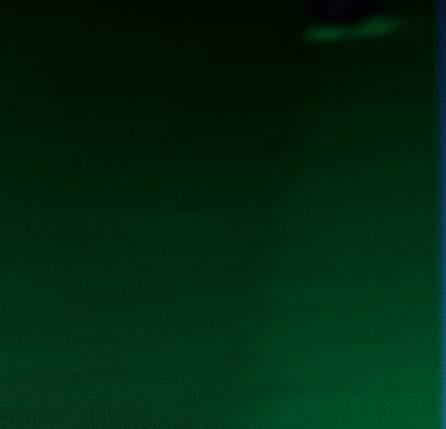

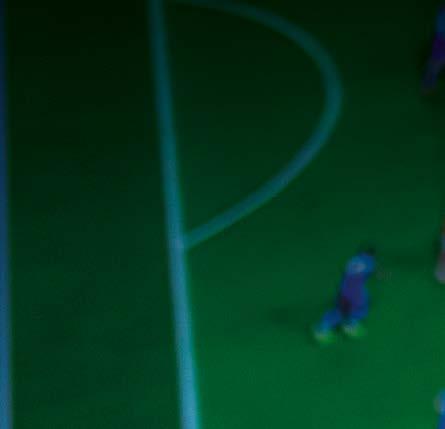
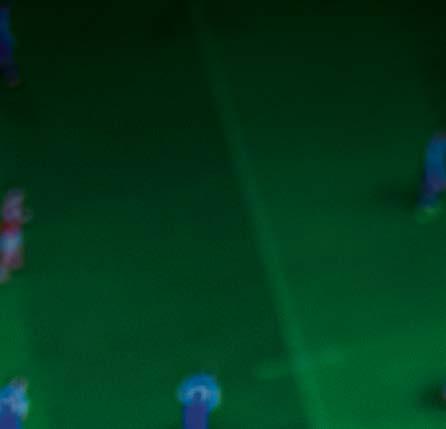







REPLAY FOR EVERYBODY, EVERYWHERE.
RiMotion is an easy-to-install replay solution that can be implemented almost instantly in broadcast environments of any scale. It streamlines traditional and modern workflows and provides real-time performance, even when working remotely.
• Intuitive touchscreen





